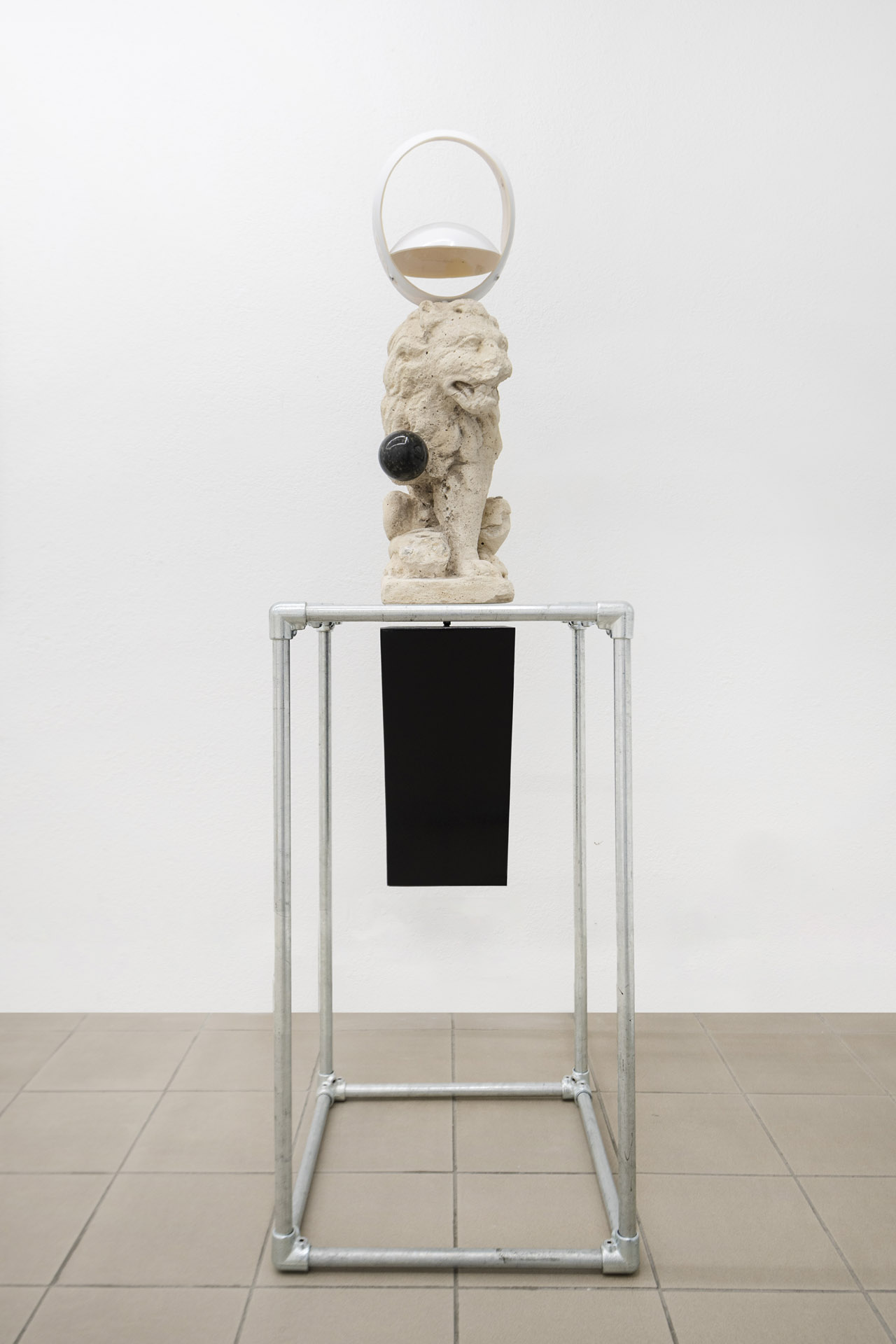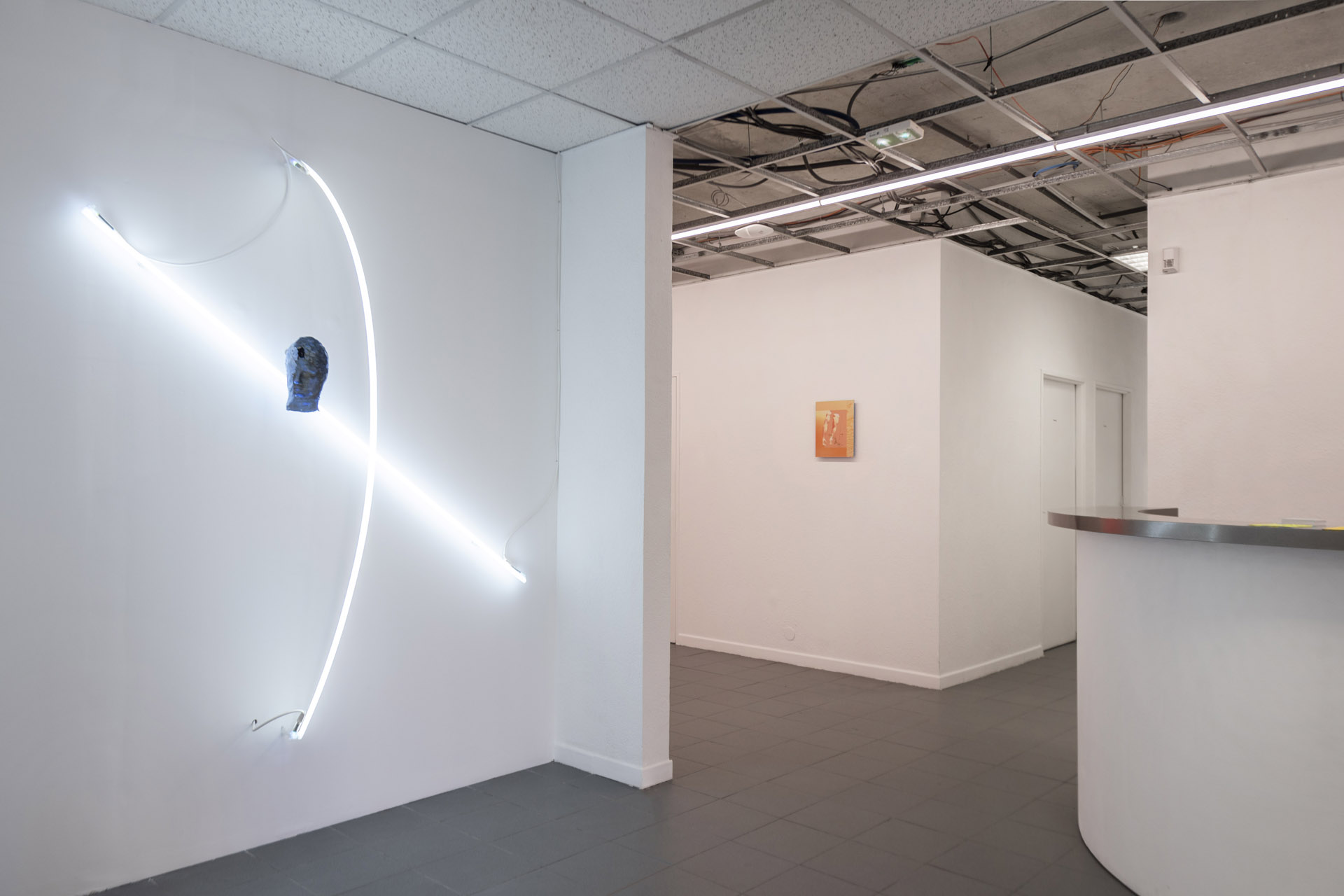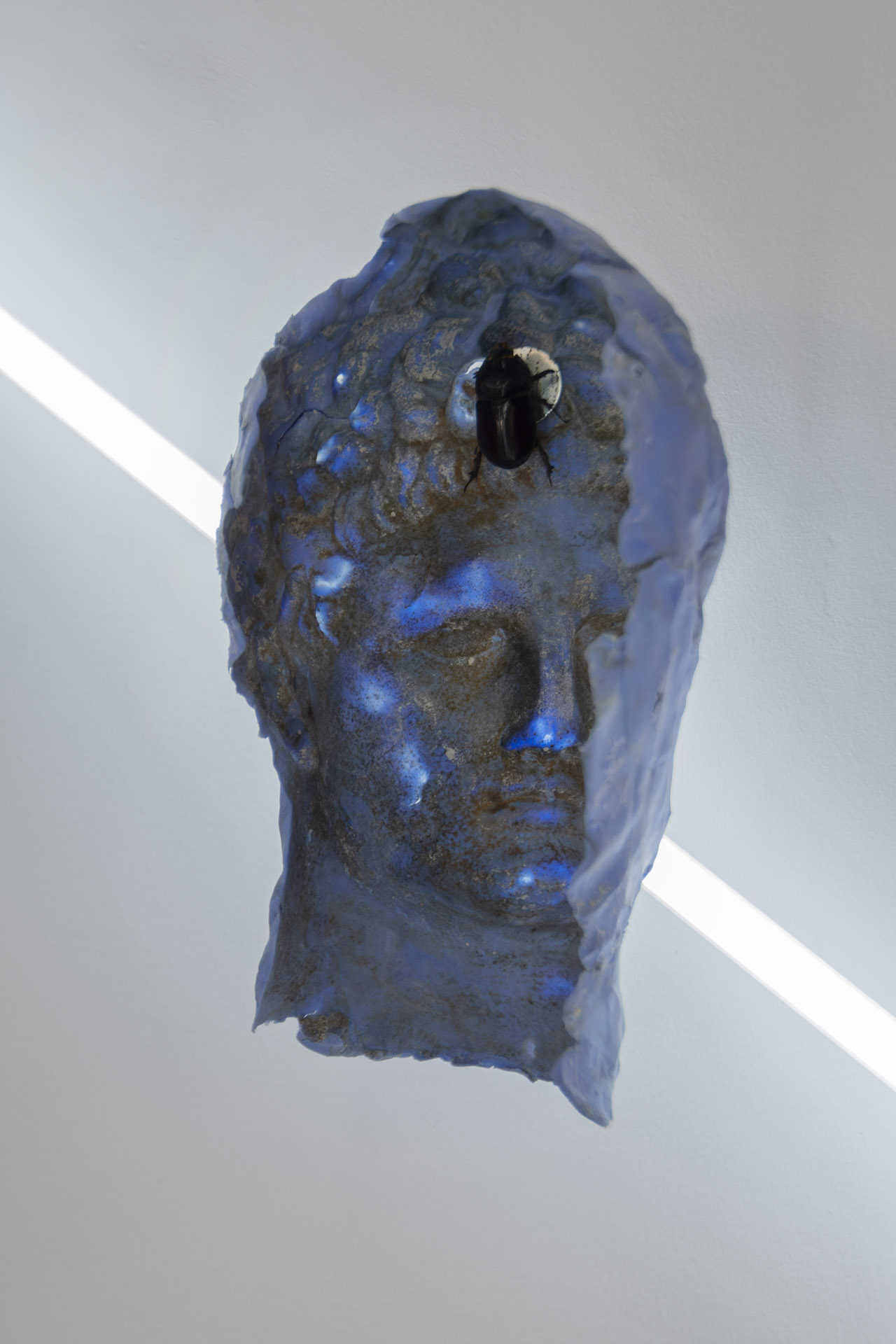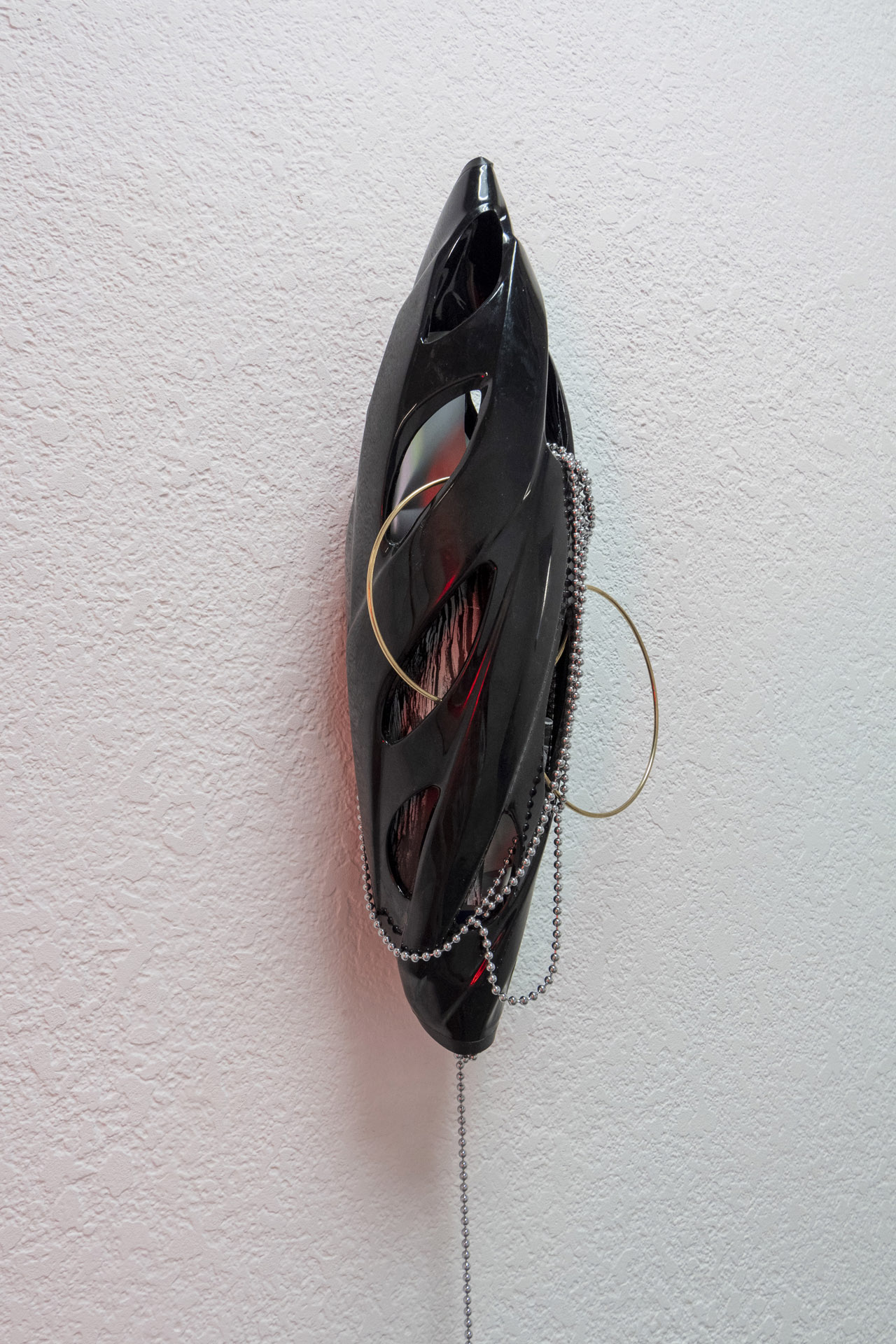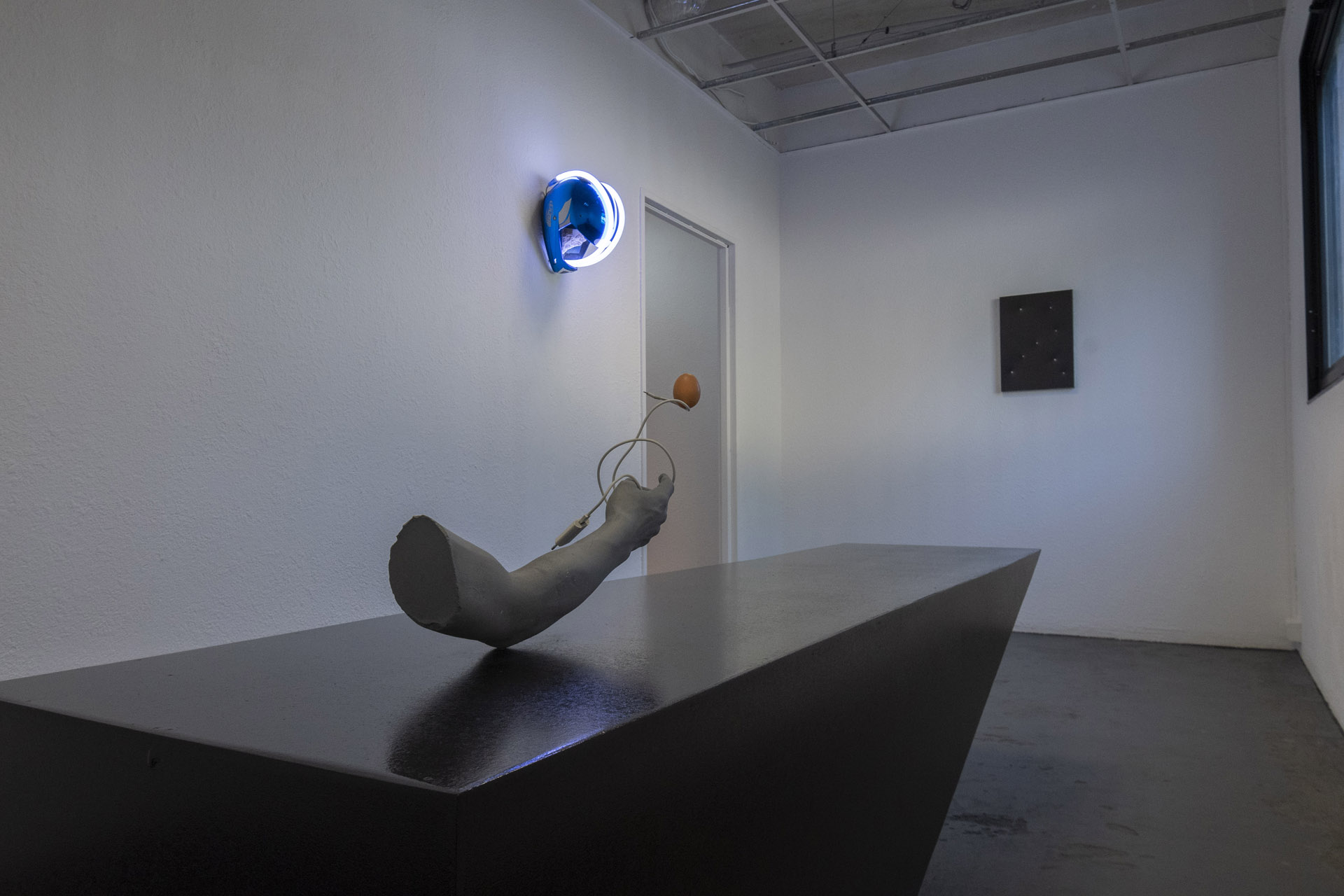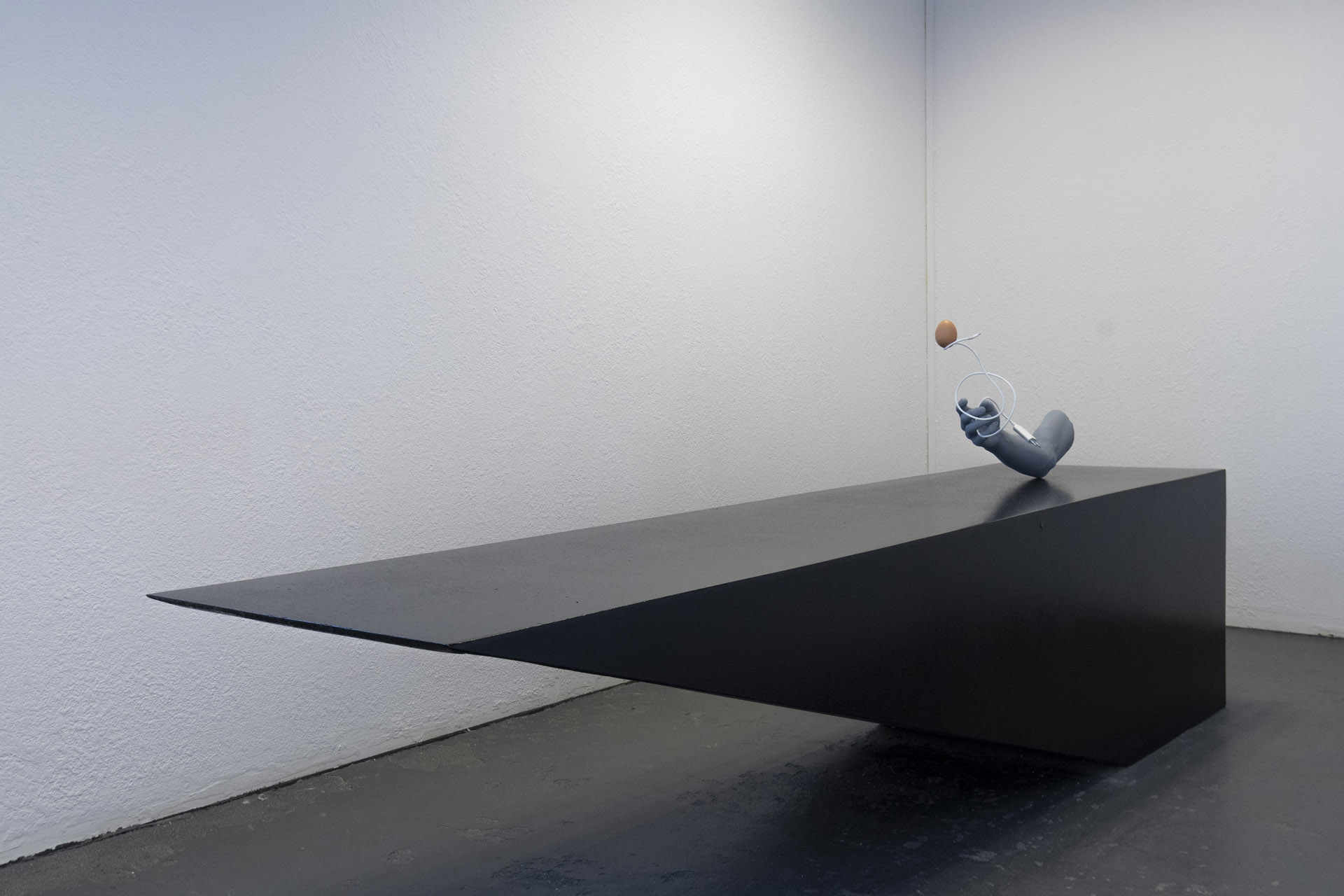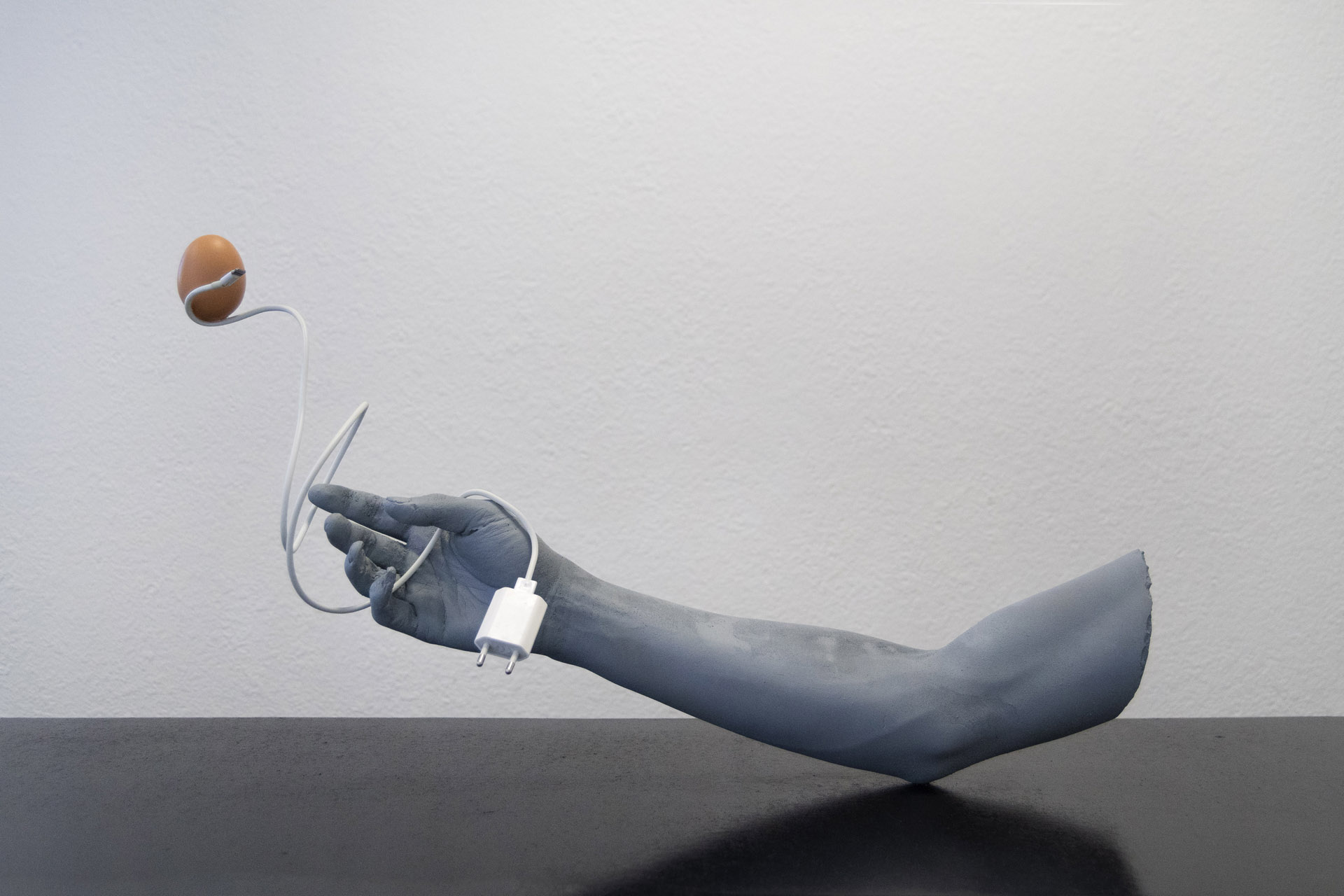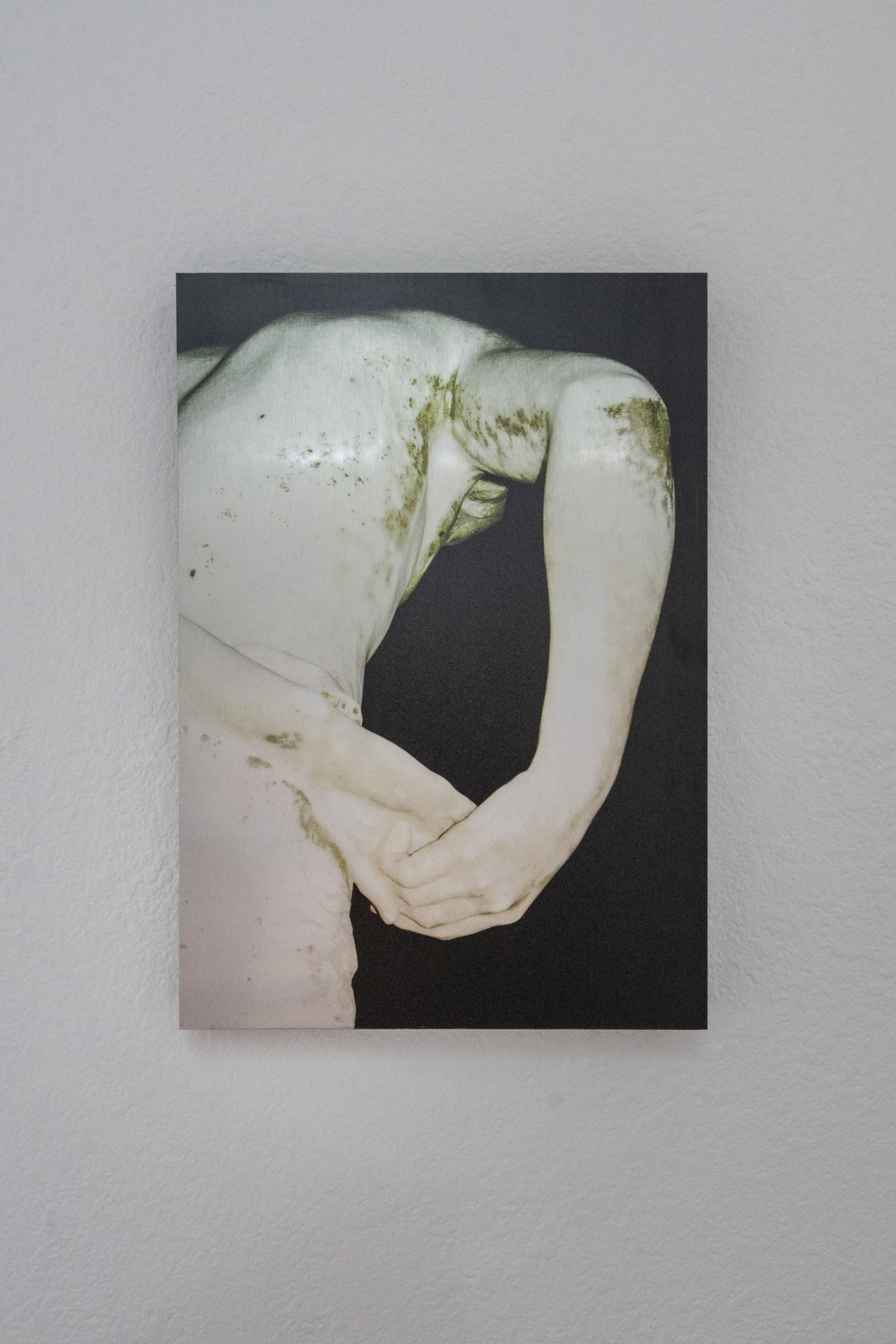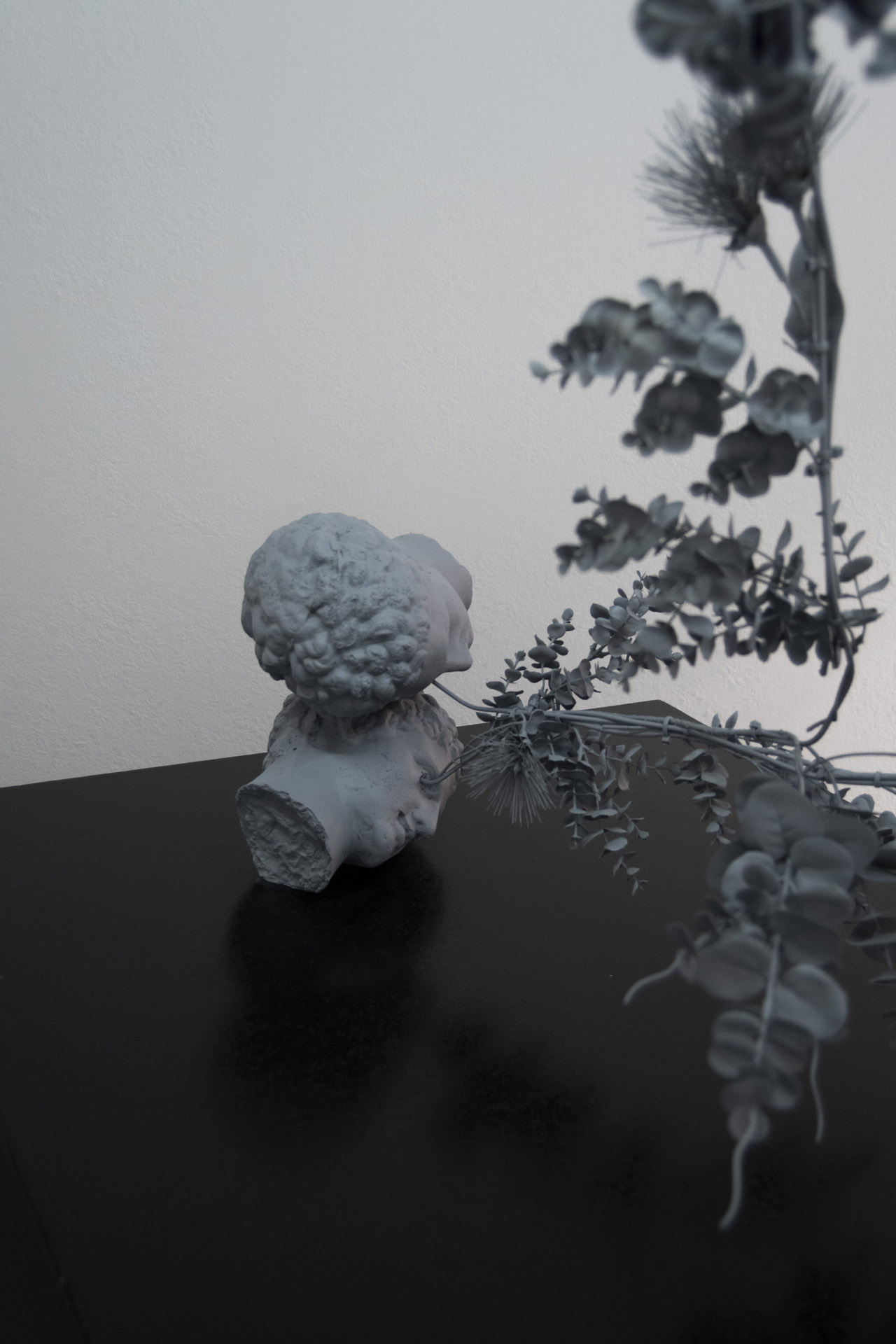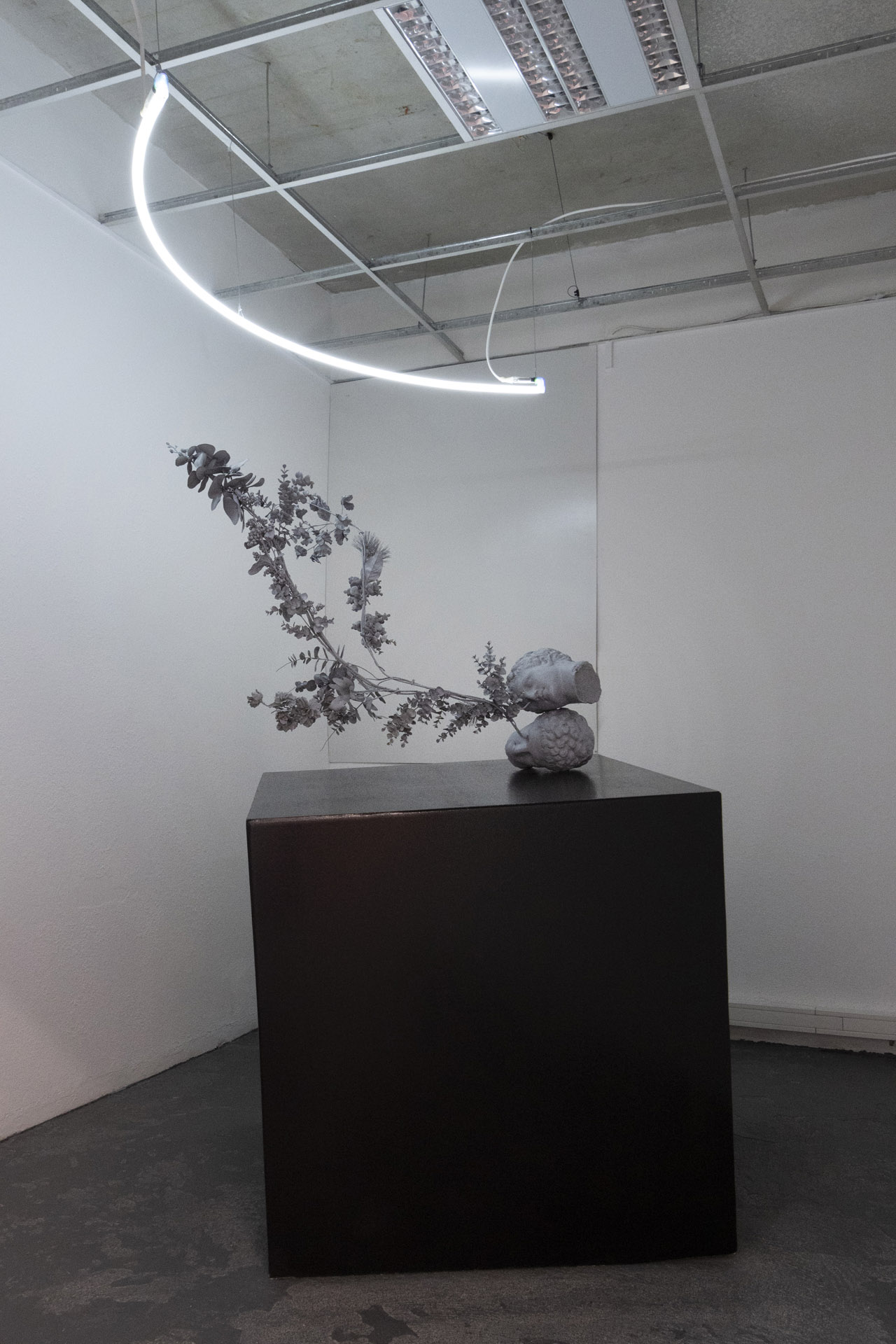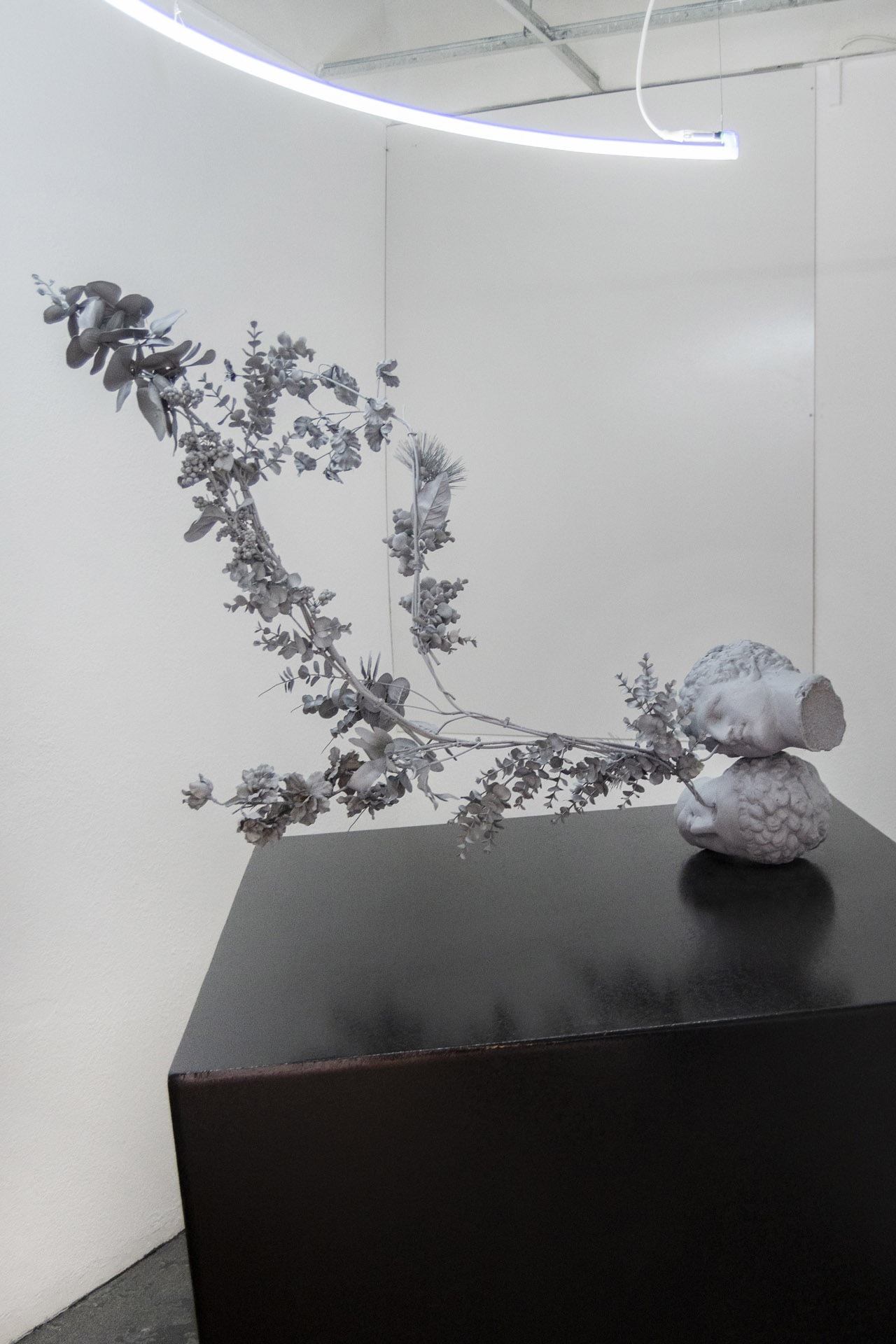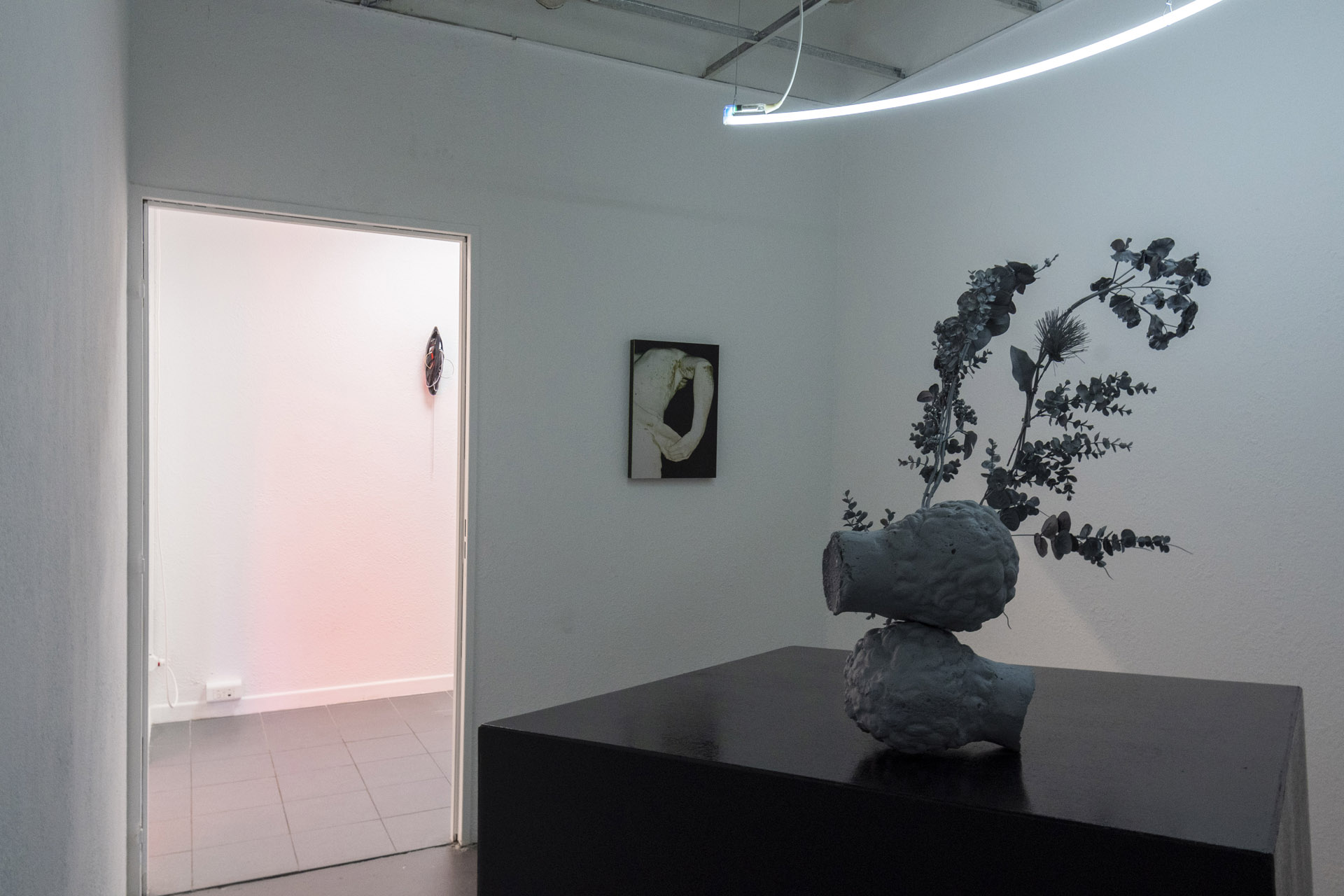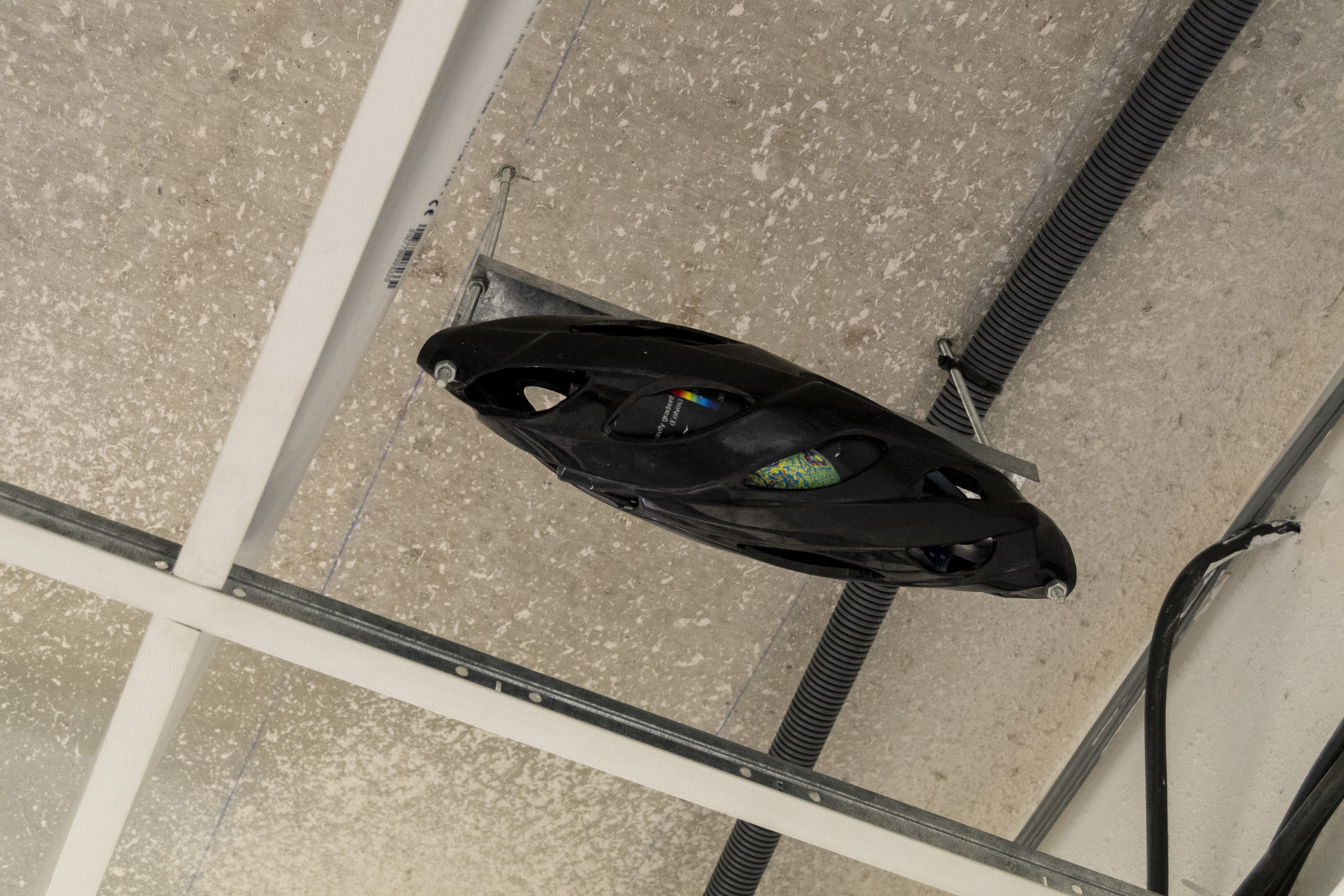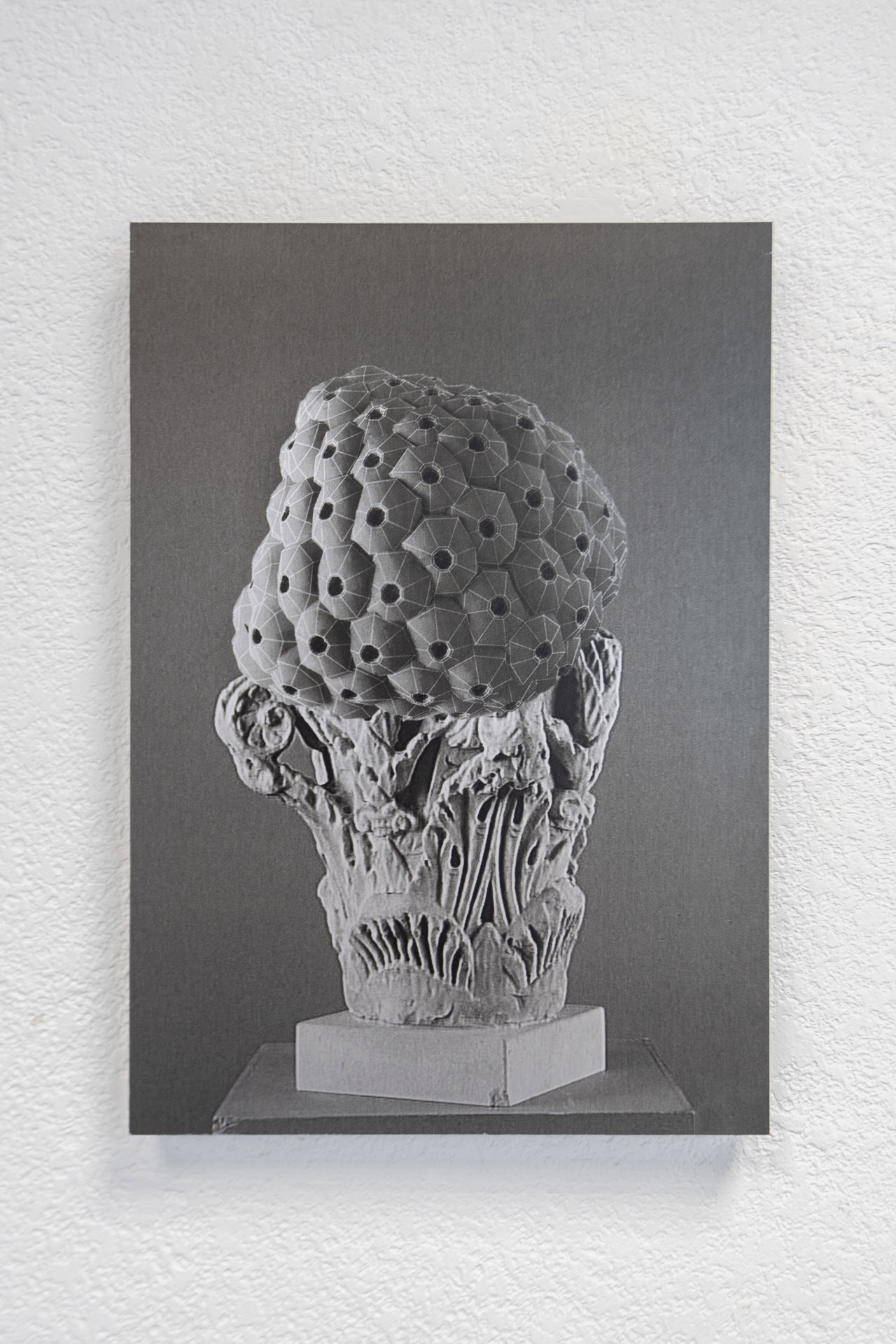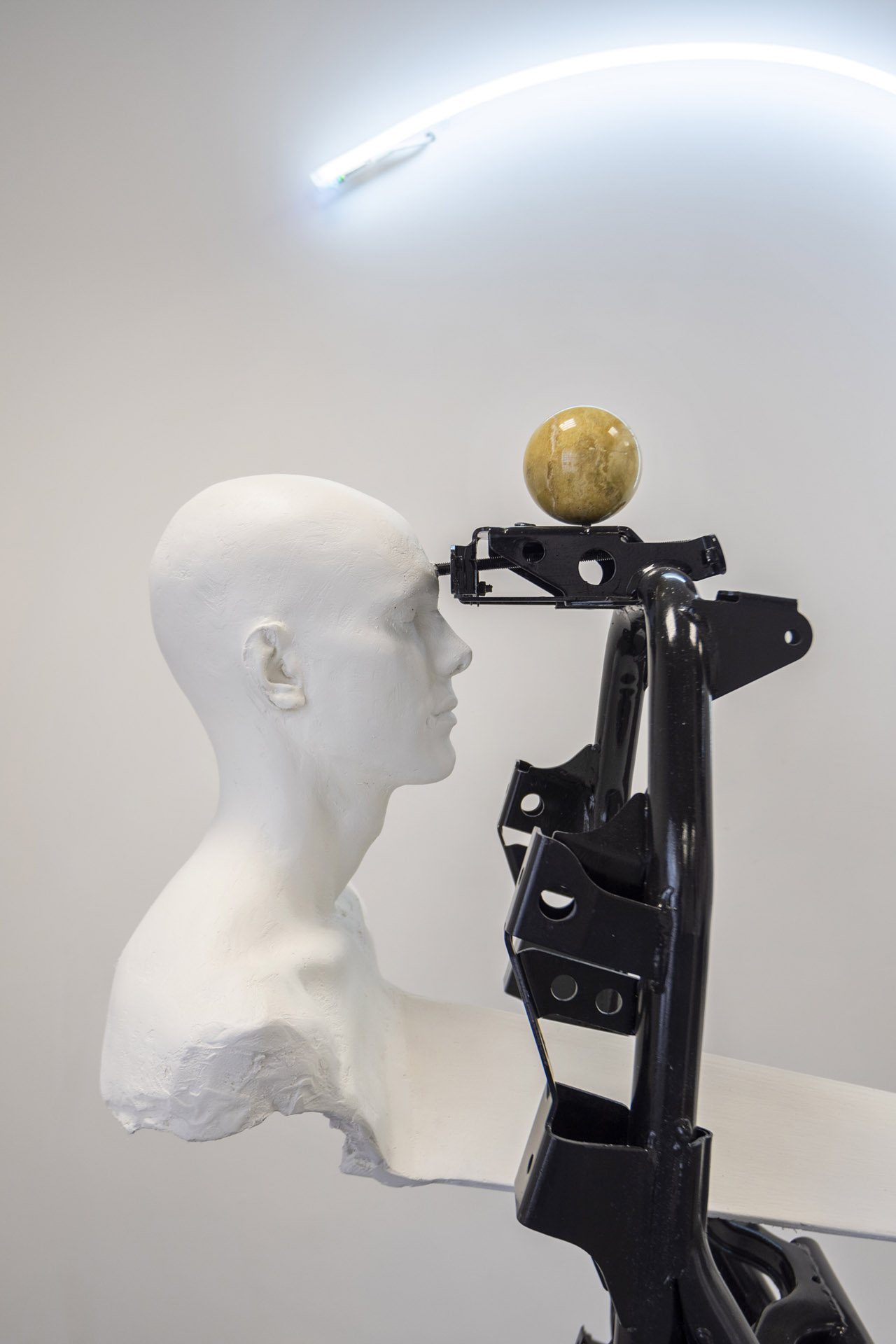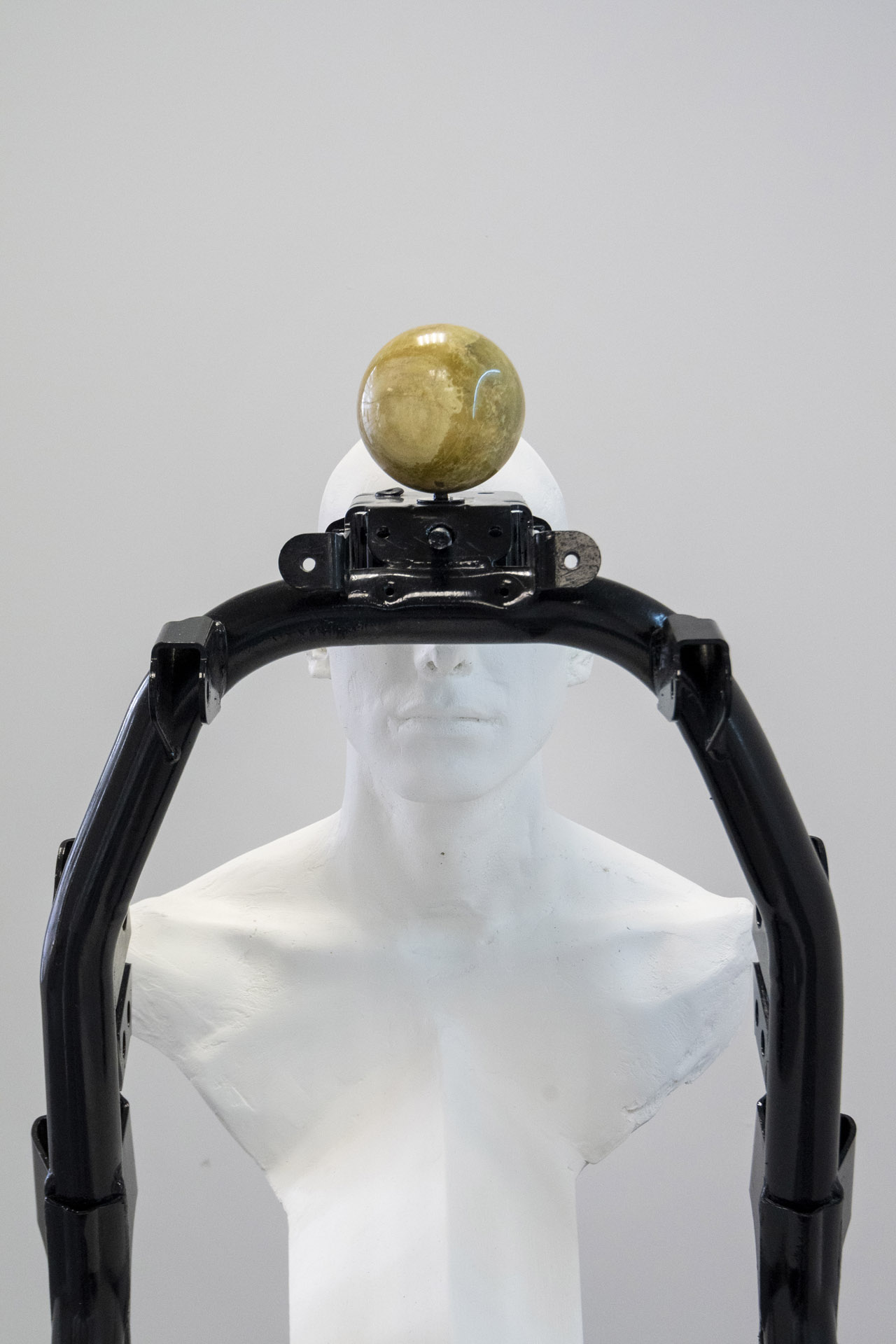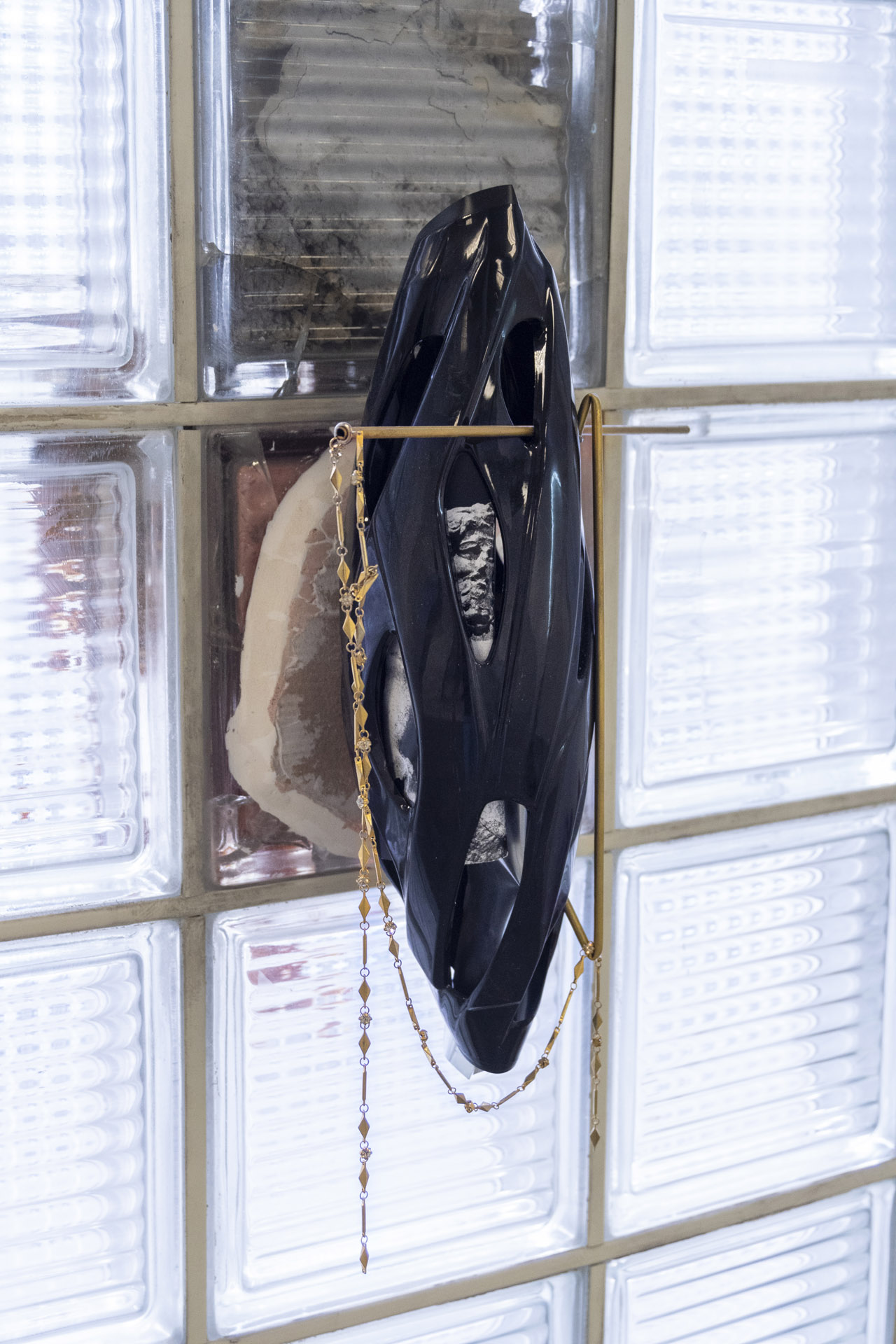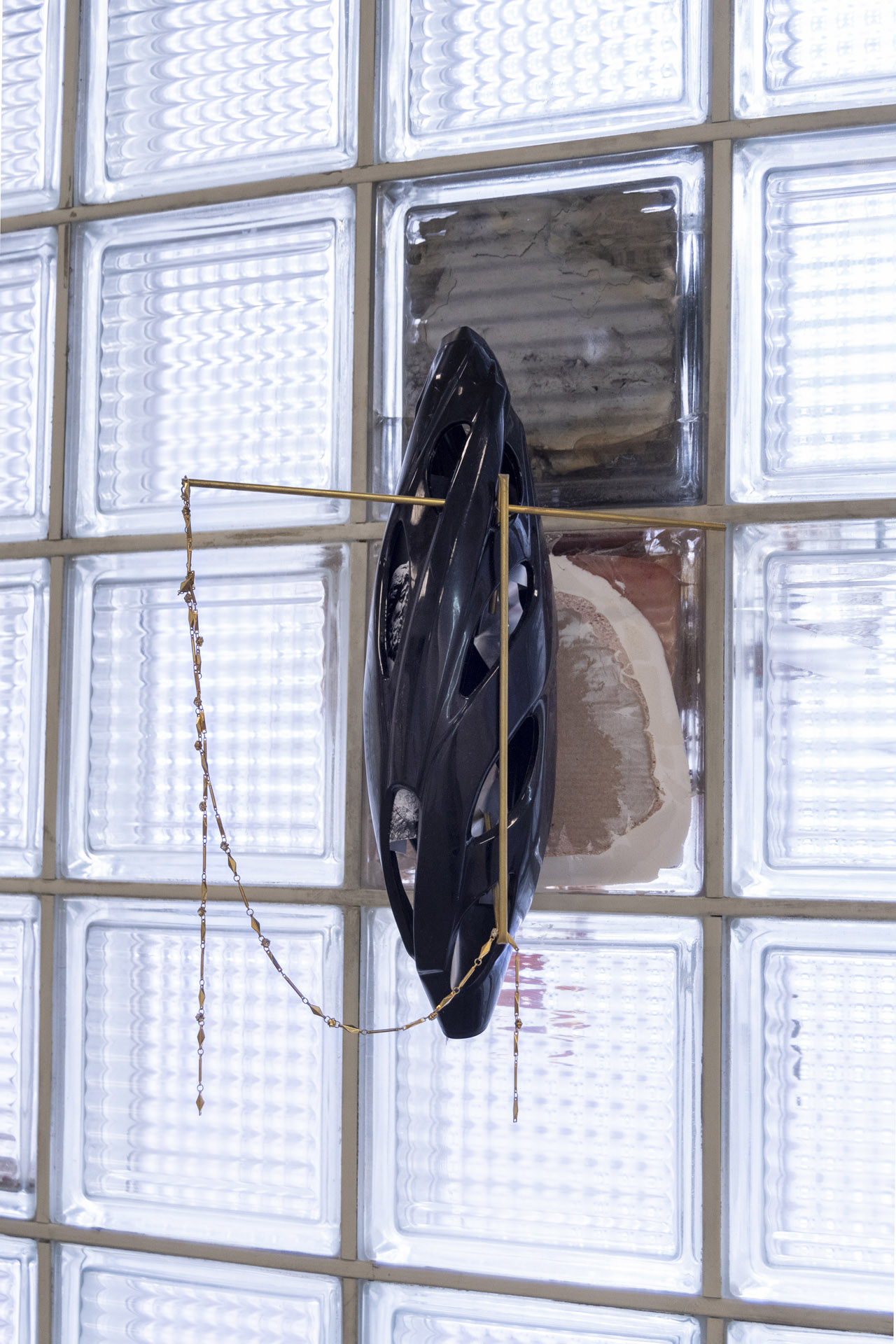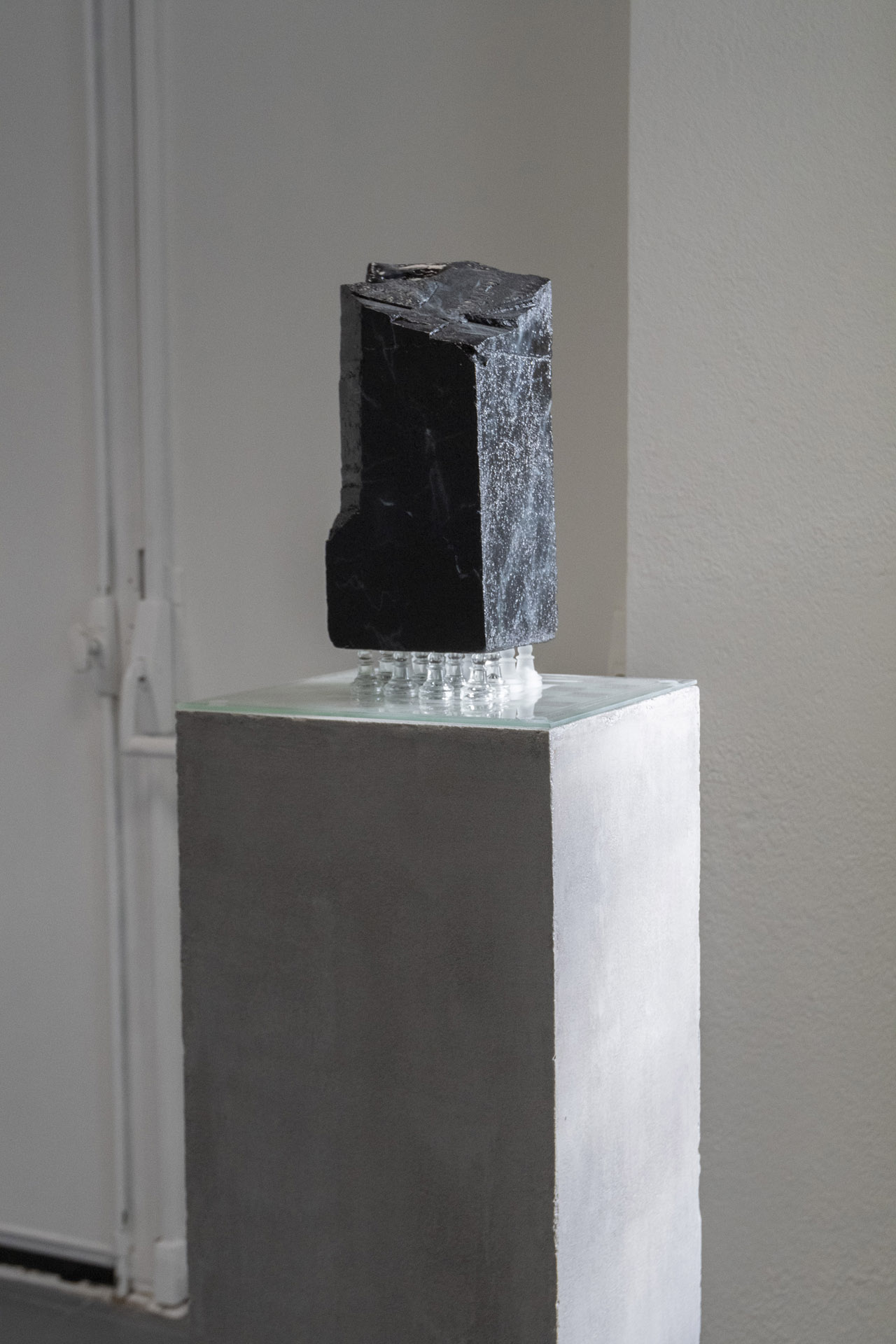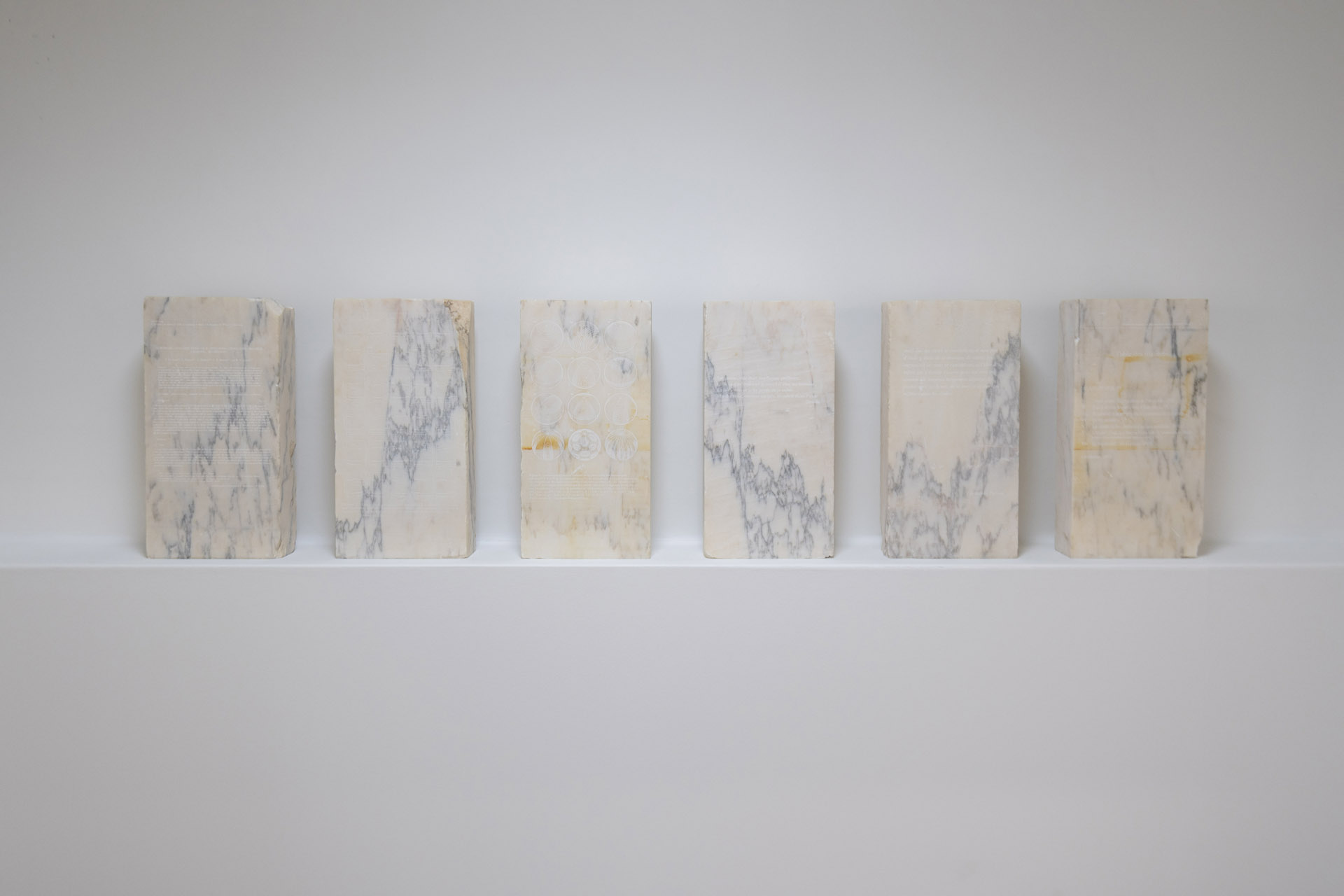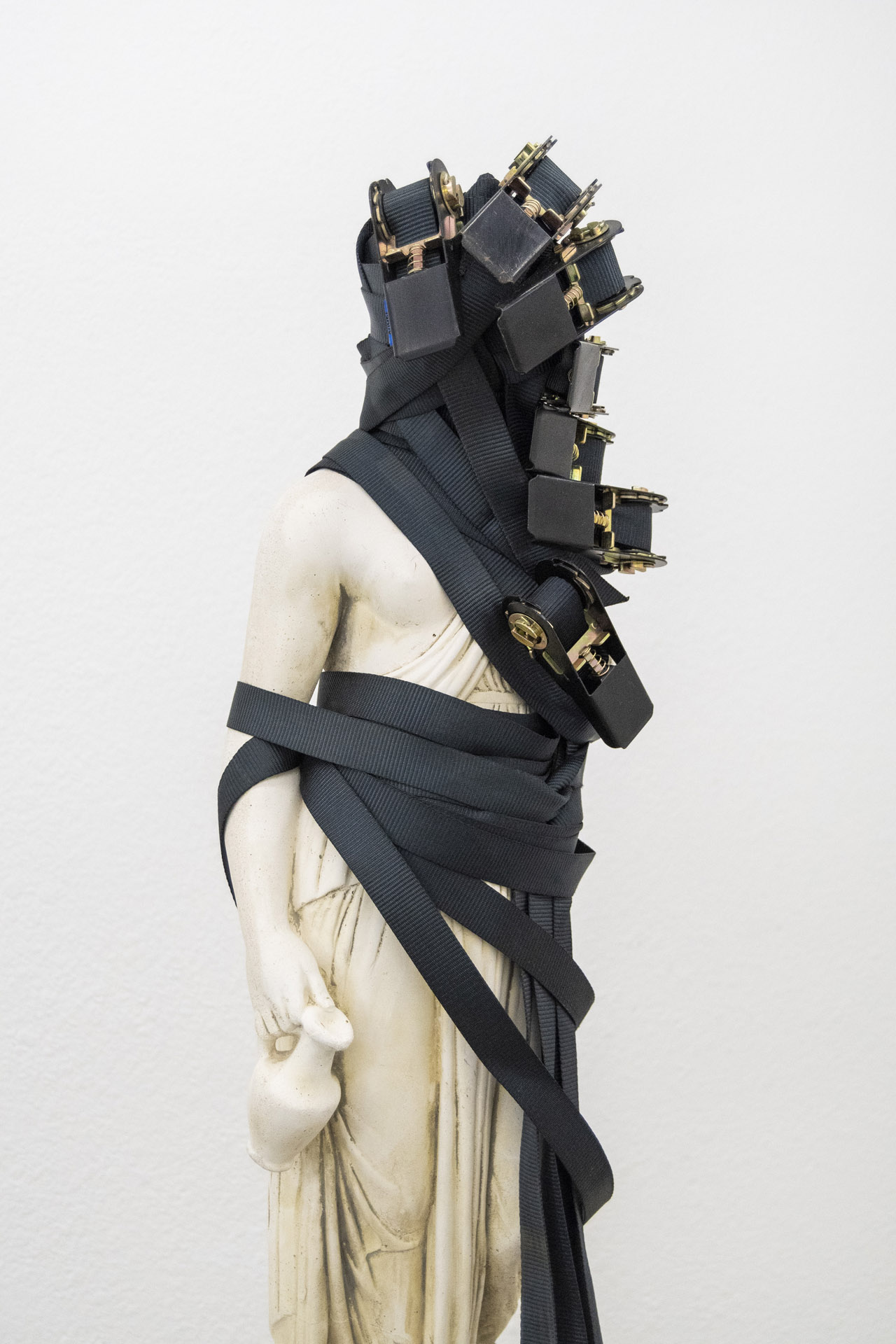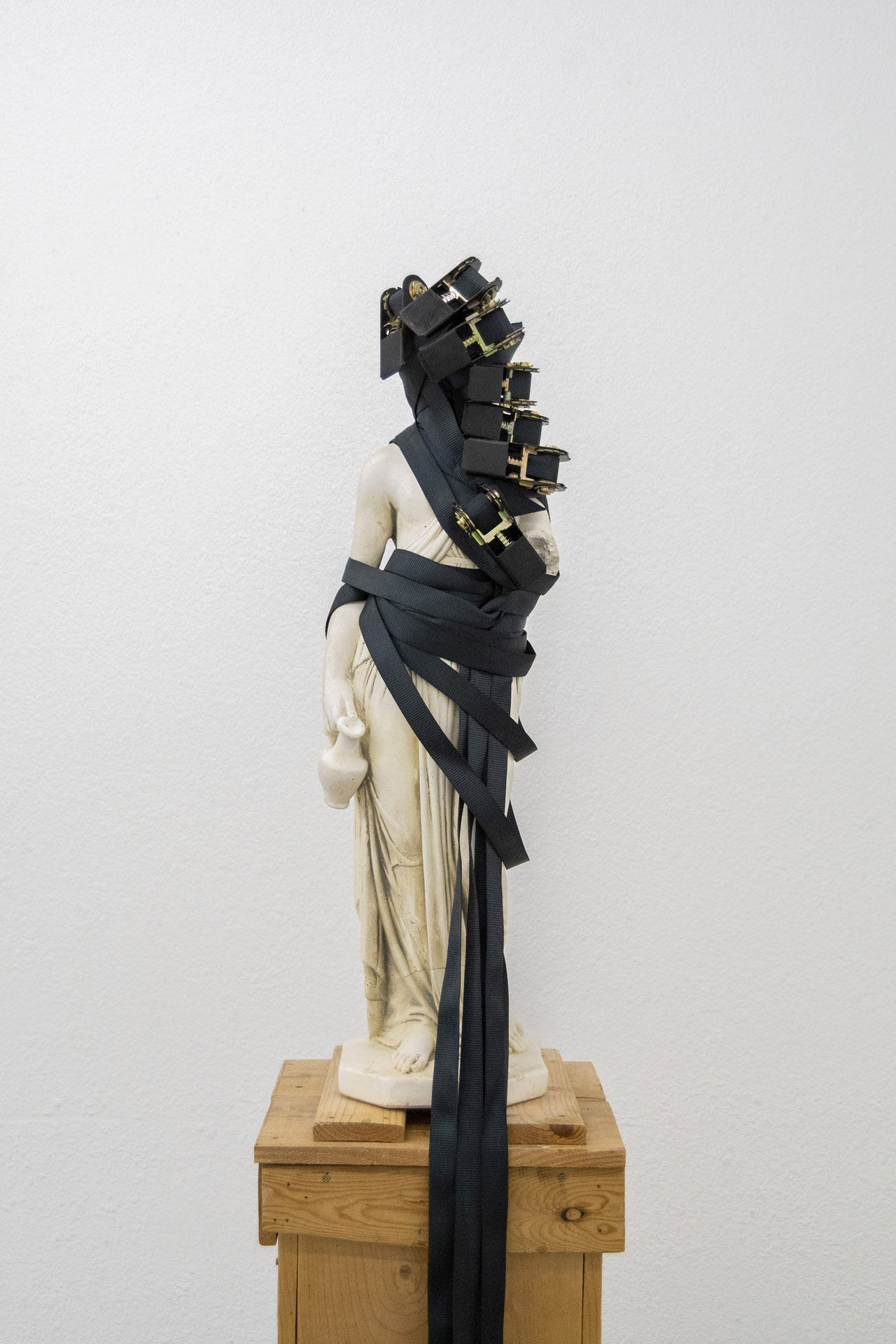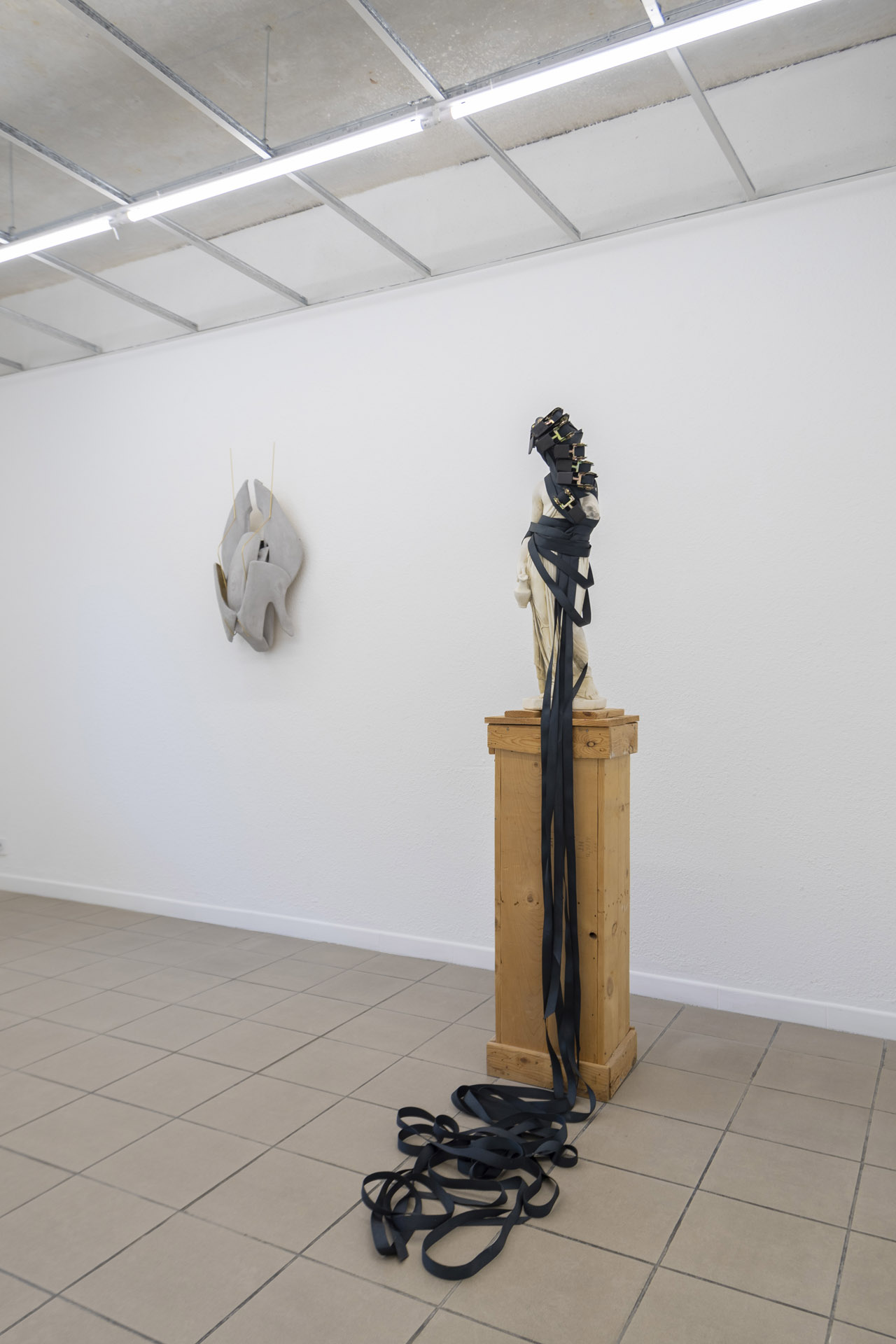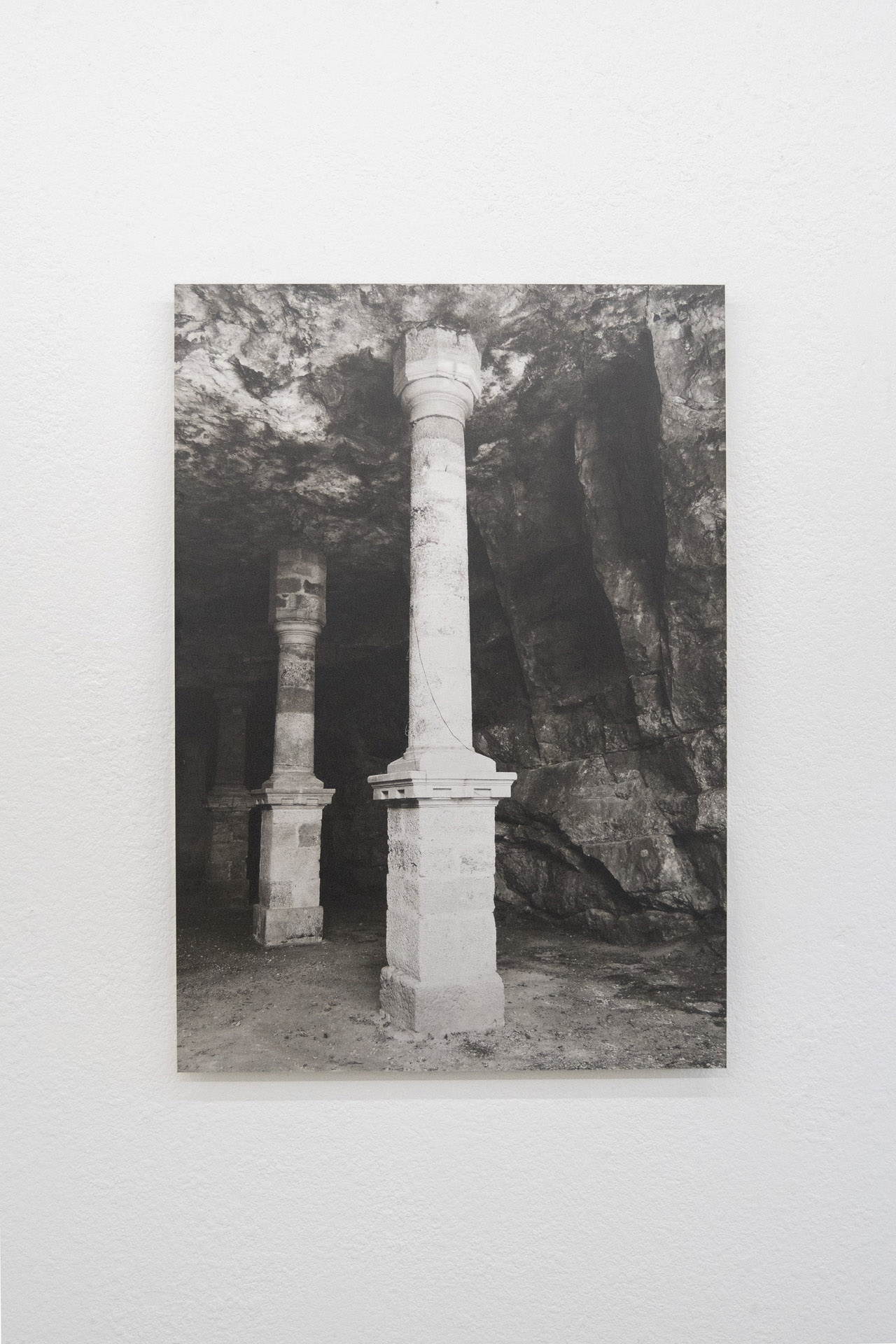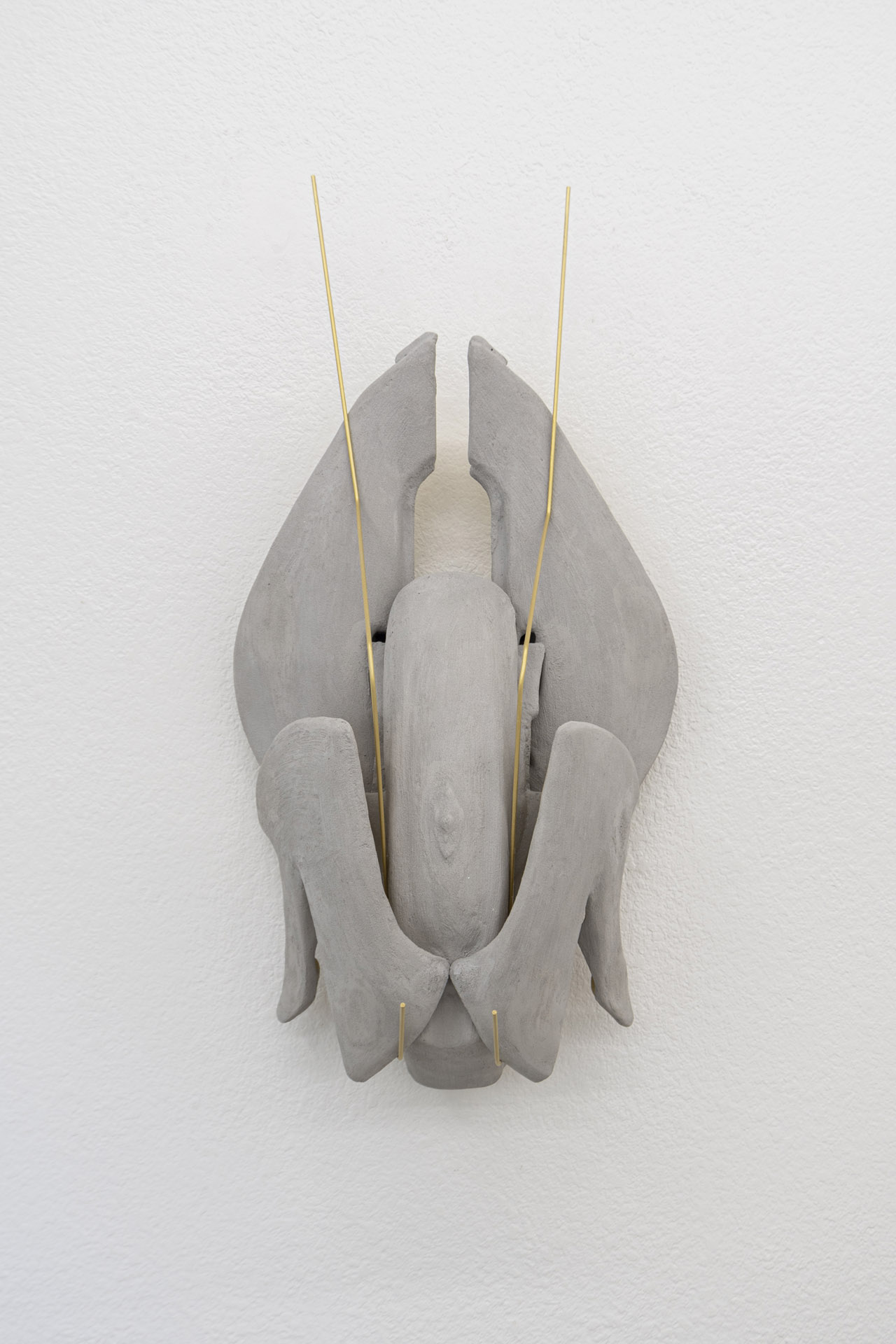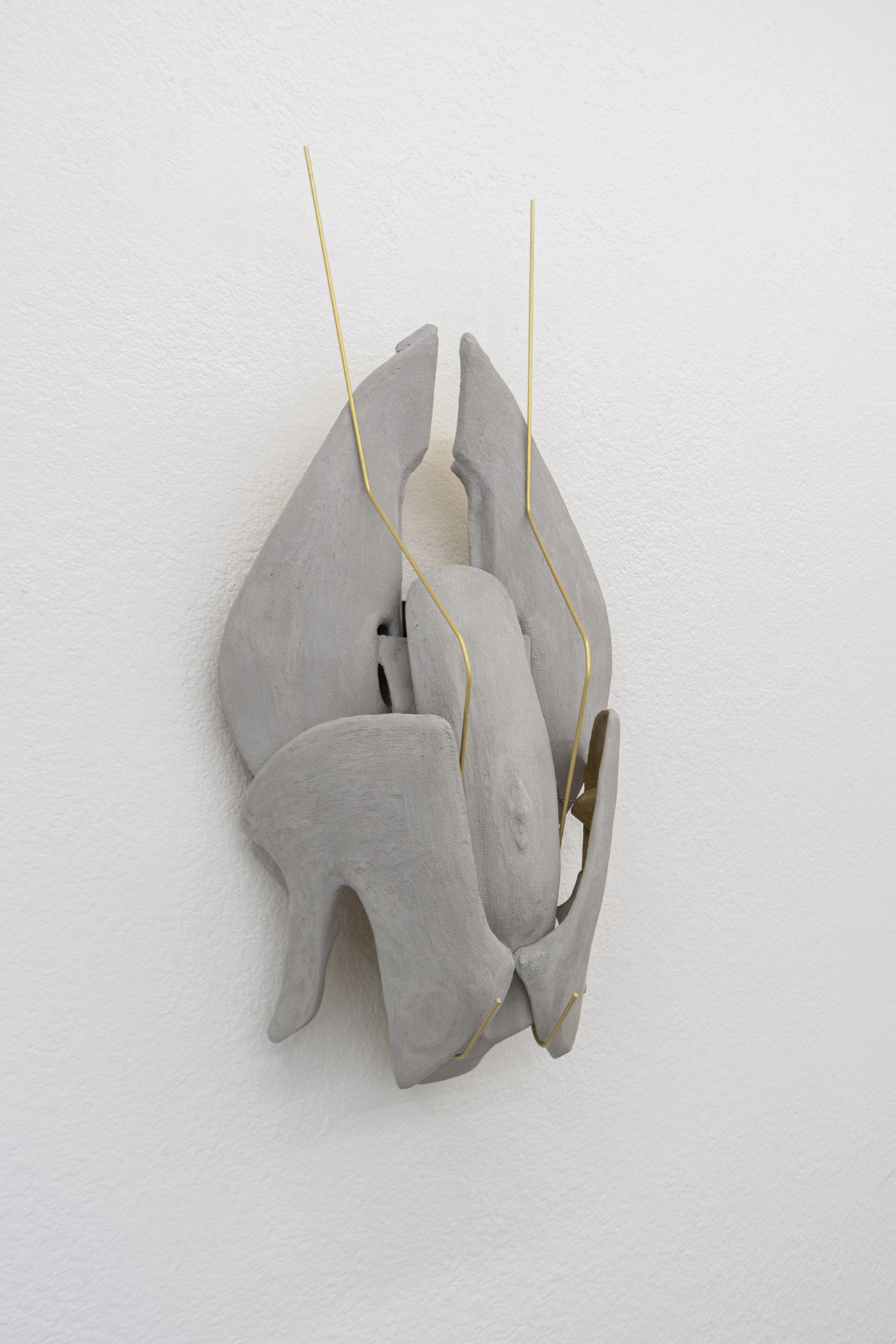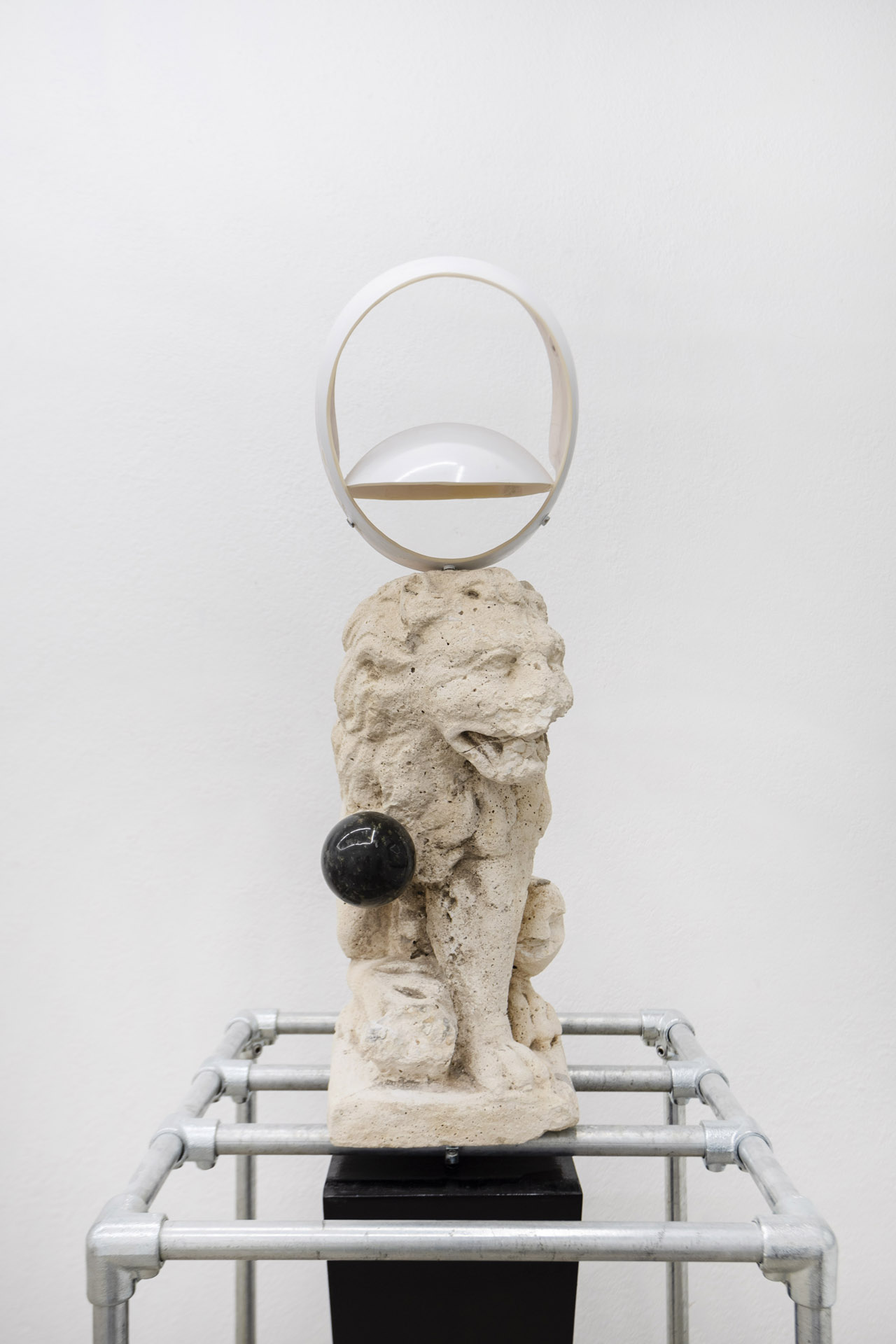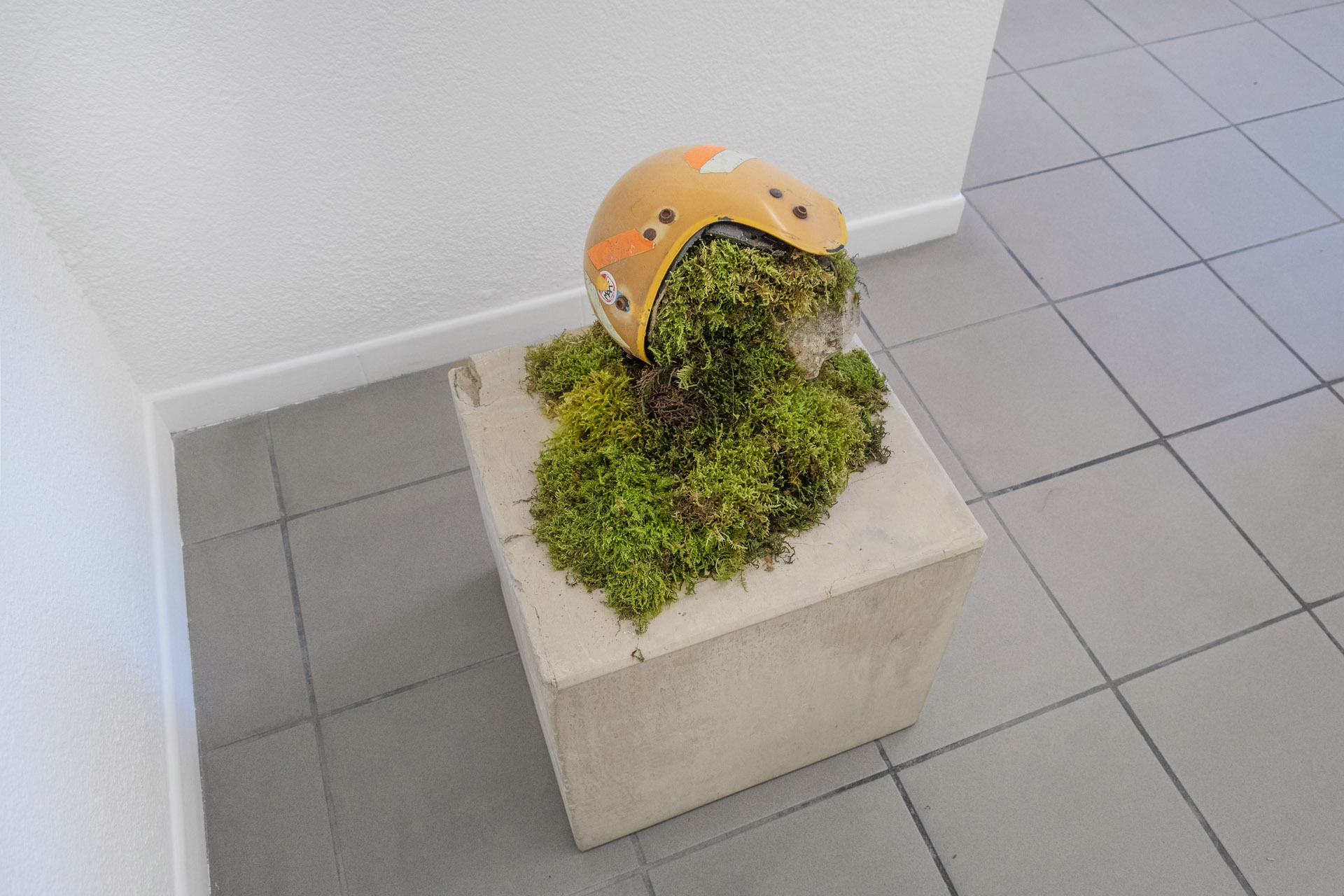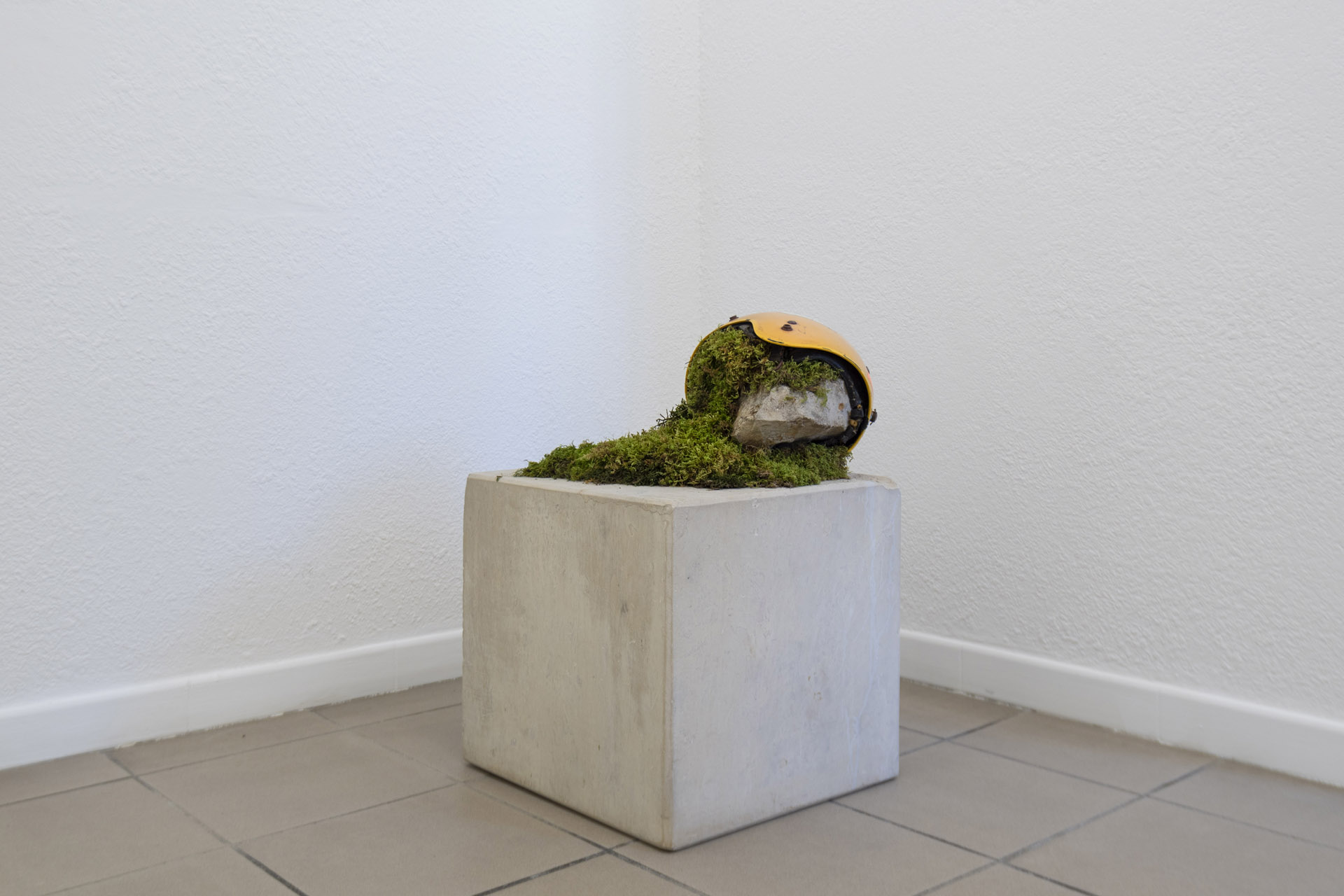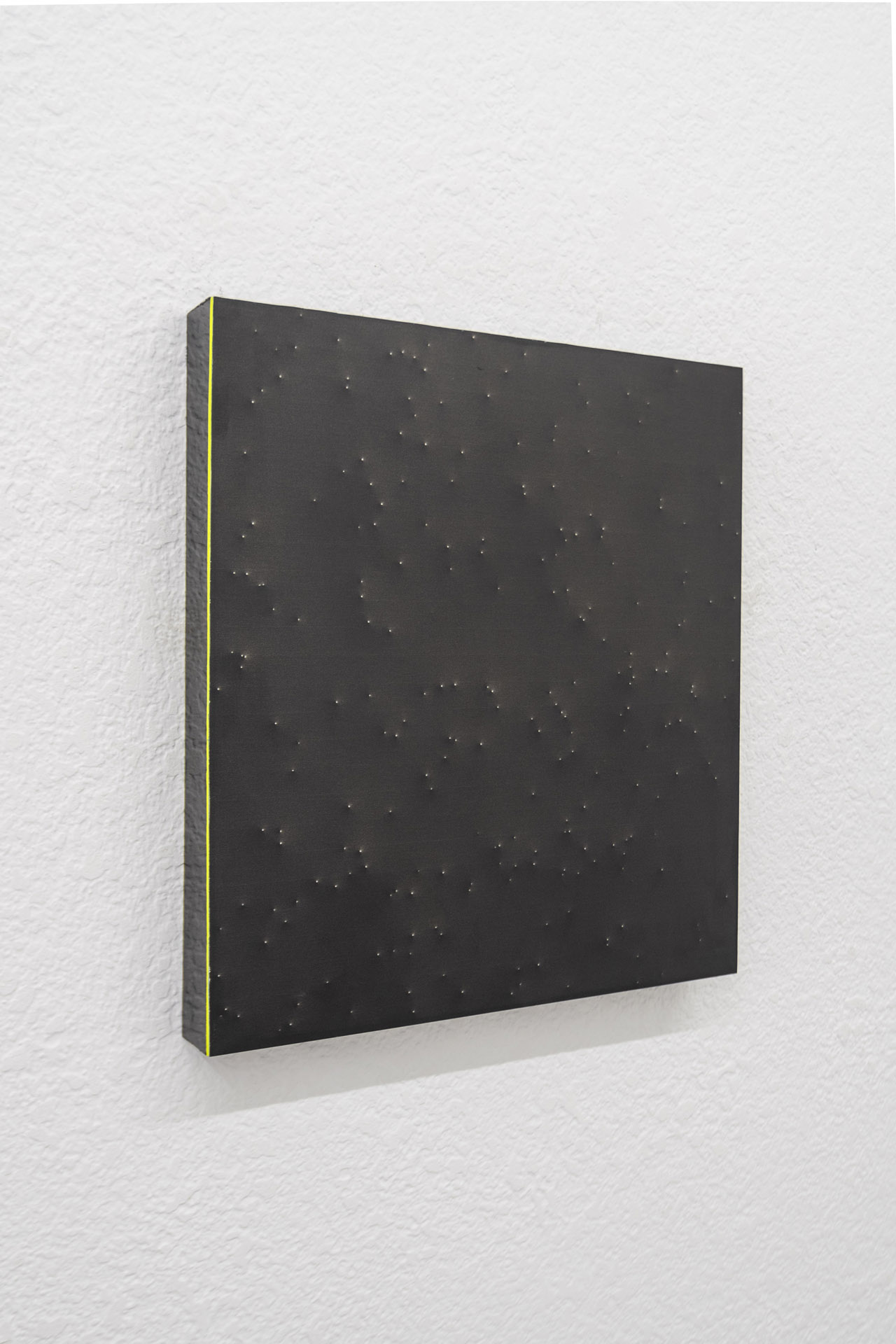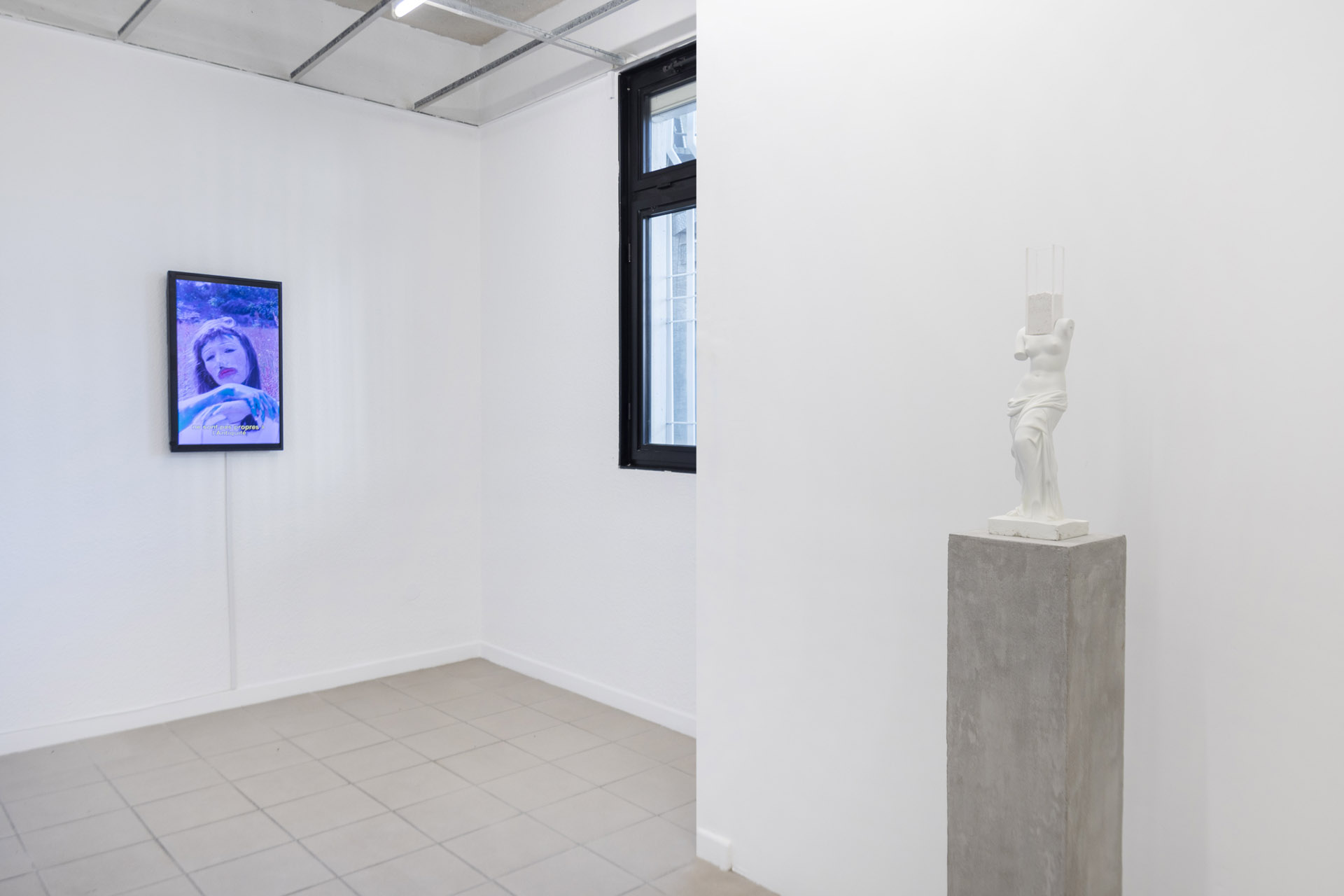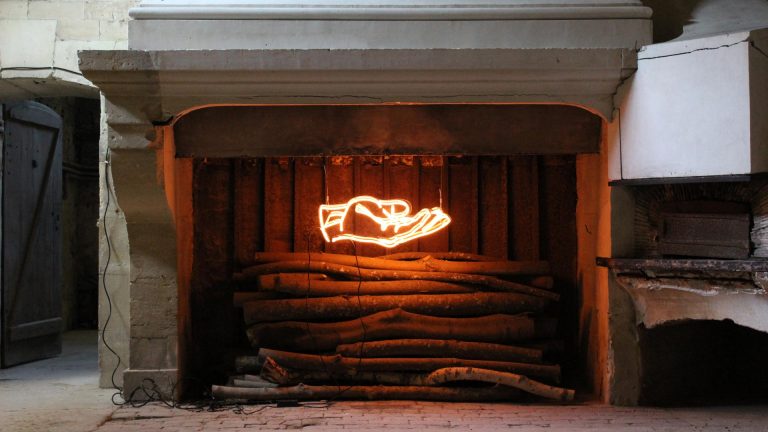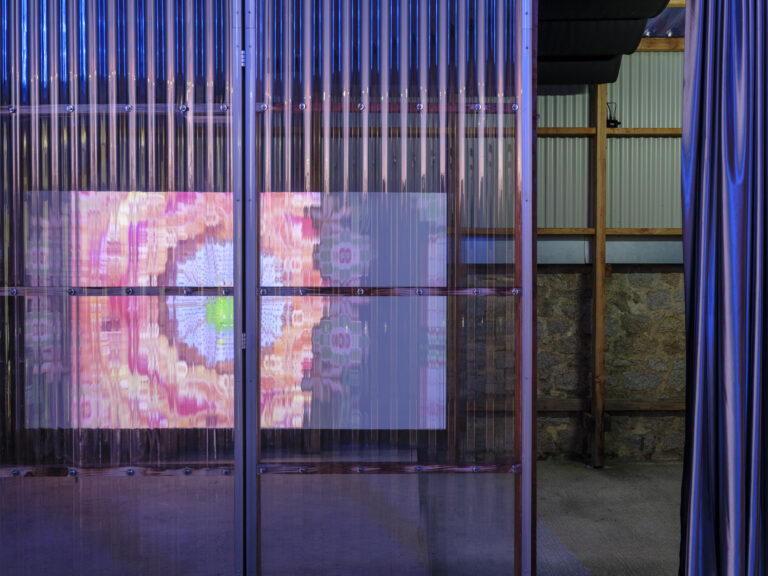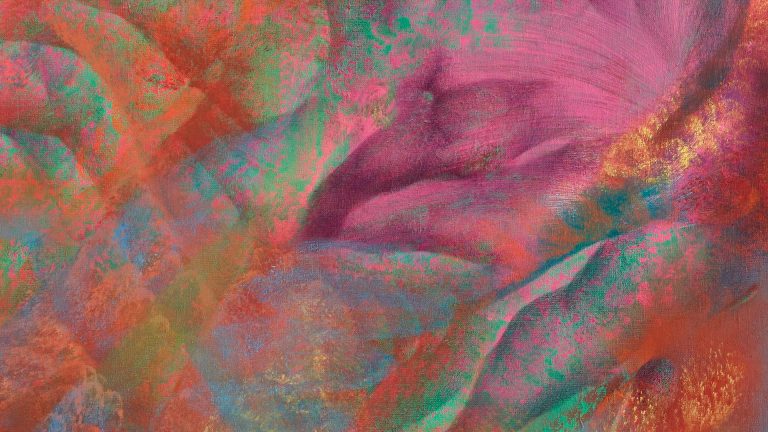Artist: Léo Fourdrinier
Exhibition title: La lune dans un oeil et le soleil dans l’autre
Curated by: Laureen Picaut & Bertrand Riou
Venue: CACN – Centre d’Art Contemporain de Nîmes, Nîmes, France
Date: October 20, 2021 – February 19, 2022
Photography: all images copyright and courtesy of the artist and CACN – Centre d’Art Contemporain de Nîmes
« Nothing escapes everything can return »
( Mark Fischer, The Metaphysics of Crackle: Afrofuturism and Hauntology, vol 5, issue 2, 2013)
Like a perfect analogy to the chemical reactions occurring in the heart of the sun, Leo Fourdrinier’s practice is the result of fusions. His aesthetic is unpredictable, unleashed and limitless. Through multiple assemblages and reinventions, the forms evolve, become fluid, elusive.
The artist deconstructs, adds, moves. Always by combinations, he proceeds by recovery of objects and symbolic materials at first sight antagonistic. A stone found at the entrance of the CACN is used to make Arôme (2018). A photograph of ancient vases, taken at the Musée de la Romanité, is printed on Plexiglas and then assembled on an iron structure from a construction site in Hếlios (2021). Objects salvaged from his family home in Nîmes are reused and amplified in compositions. Often, the artist associates his fascination for antiquity, for archaeology or mythology with the reading of a text, an event, a sensibility, an image. If the interpretation sometimes seems to be hidden under multiple theoretical and formal collages, the balance resides in the territory to which the works are fundamentally linked.
43° 49′ 32.952” N 4° 20′ 5.172” E, the GPS coordinate of the CACN’s location, can act as a clue. This intuitive geolocation system works as a drop point from which infinite distances can be deployed. Thus, following a difficult break-up, the artist began a scientific collaboration with the astrophysicist Arthur Le Saux. He assimilates the luminous vibration of the stars to the different reliefs of a love relationship and tries to grasp its materiality. The sky photograph, series Les nuits (2017-2021), taken with a phone and an hdr effect is the continuation of this research. The presentation device brings the photograph into the space of three-dimensionality, recreating the experience of fullness and emptiness that can be induced by the different stages of a love relationship. In Amour (2021) the physicality of the feelings that the artist explores finds its apogee. The installation composed of two twin faces from which artificial flowers are born evokes the fluctuation of the experience of love, its instability, induced by the inclination of the base. It resonates with Poursuite (2021), a photograph of statues taken in the Jardins de La Fontaine in Nîmes. Overhung by the moonlight of neon, the two works dialogue and evoke the dispersion of a fluid and fragmented body. In Simplexity (From Him to Eternity) (2021), whose title borrows from the concept of “simplexity” (simplexity is the art of making complex notions accessible) and the song of Nick Cave, the body has almost disappeared. An IPhone charger cable is next to an egg placed in the hand of a sculpted arm. A monumental pedestal – or a spaceship – reinforces the dystopia of the piece, setting it up as an oracle of a future society.
Within the exhibition, the atmosphere disintegrates with the fluctuations of light induced by the neon lights. For the installation Until Astral Rave (2021), the artist recovers the broken and scattered neon lights of a store sign. The space, immersed in a warm, solar light, disrupts orientation: is it noon or midnight ? Opposite, on the floor, a shirt and the remains of a camel’s spine bear witness to the absent body. Morning (skin crawling) (2021) functions as both a ruin and a prophecy. It evokes a nostalgia for the future, exploring the experience of weariness in the face of a capitalist system that is losing its meaning. Between dystopia and relic, the self-portrait The Sleeper (2021) is the perfect interpretation. Here, a humanoid sees his life flash by. We witness the birth of an alter ego, a bodily big bang between augmented and anticipated materialities. The scooter chassis makes the body and its precariousness disappear. It makes its certain end null and void, thus leading it into unhoped-for temporalities. In opposition to the perenniality of the material used to represent the body, the artist’s face molded in plaster could collapse at any moment. The exploration of the world of mechanics leads Leo Fourdrinier to evoke the sensuality of the curves of a motorcycle in I’ll Fly With You (2021). The schematic of a motorcycle engine breaks down in the background and is confronted with the musculature of the body. The schematic of a motorcycle engine breaks down in the background and is confronted with the musculature of two arms in computer generated images. The smooth and seductive surface of a pearly pink aluminum plate and the reference to Gigi D’Agostino’s famous song deconstructs the virilistic and biased archetype of a single definition of masculinity.
Finally, as if to restore the balance, Leo Fourdrinier lingers on the female figure. Don’t Cry Baby, it’s a Movie (2019) is a humanoid reptilian makeup tutorial that adopts the markers of science fiction narrative. In this one a reptilian tries to hide herself under successive layers of make-up to answer the diktats and injunctions of our society. While telling a conspiracy story, her singularity and soul evaporate. Mater (2017), is the violent image of a strapped woman. Offered as an echo of Jean-Pierre Simeon’s play “Stabat Mater Furiosa” in which a mother recounts the experience of war and loss, the work is a tribute to female power.
If the works of Leo Fourdrinier act as spectres of a bygone era, as ghostly presences, they are also premonitions and alerts, they make visible the ills of our century. Within ” La lune dans un œil et le soleil dans l’autre “, the works-artefacts enter into the history of a new world that is already being consumed.

